
Articles

Marching to a better Namibia with black soldier flies
Namibian Chamber of Environment
Black soldier flies turn organic waste into useful agricultural products, while simultaneously reducing green house gas emissions and creating jobs. This little insect that has taken the agricultural world by storm is now in Windhoek, Namibia! A new company called Biocycle established a black soldier fly farm with funding from the Namibian Chamber of Environment to pilot the idea. Read this article to discover how black soldier flies work and what plans are in place for future national expansion.
Read more...
Topics...

Navigating Hunger: How seabirds have adapted to Namibia's depleted fish stocks
Namibian Chamber of Environment
Namibia's seabirds are in trouble, mainly due to the massive decline in fish stocks over the last few decades off our coastline. Fish declines have also reduced jobs in the fisheries sector and affected the national economy. If fishing pressure is reduced the birds will start to bounce back, and the fishery sector may also start to recover. In this article, we show how monitoring specific aspects of four different seabird populations can be used to indicate the health of our fish stocks.
Read more...
Topics...

Embracing the Wild: Namibian Farmers' Shift Towards Wildlife Ranching
Namibian Chamber of Environment
Namibia is getting hotter and drier, making it less useful for livestock farming and putting pressure on people to adapt their agricultural practices in order to survive. The use of wildlife that are naturally adapted to arid conditions as a source of income and food is a promising way forward as part of Namibia's climate adaptation strategy. Research around and within Etosha National Park shows that when people see wildlife as an asset it can be a game-changer for conservation and livelihoods.
Read more...
Topics...

Hopping into the limelight: Newly described Beytell's bullfrog underlines the importance of the Nyae Nyae-Khaudum pans
Namibian Chamber of Environment
Beytell's bullfrog is the biggest frog to be described by scientists worldwide in the last 104 years! This impressive amphibian was collected and studied in the Nyae-Nyae Khaudum Pans as part of a survey to show that this remote part of Namibia should be declared a Ramsar Wetland of International Importance. The bullfrog is named after Ben Beytell, former Director of Parks and Wildlife, who was passionate about this landscape and the Ju/'hoansi San people who call it their home.
Read more...
Topics...

Are Namibian Fairy Circles Euphorbia Tombstones?
Namibian Chamber of Environment
A new study brings to light a possible cause for Namibia's fairy circles
– large succulent bushes called Euphorbias. These plants produce highly toxic milky white latex that inhibits the germination and growth of other plants, effects that last long after they are dead. The new theory explains many features of fairy circles and even predicted where previously unrecorded ones would be found. Large-scale die-offs of these plants could be linked to past climate change and is therefore a concern for the future.
Read more...
Topics...

Promoting transparency, public participation and understanding of the Environmental Impact Assessment process in Namibia
Namibian Chamber of Environment
Public trust in Namibia's Environmental Impact Assessment (EIA) process seems to be at an all-time low, with many complaints and protests occurring after development projects have been given the green light. The new EIA Tracker website will increase transparency and public engagement with development projects during and after the EIA process in order to minimise environmental and social impacts. In particular, high risk development projects require careful public scrutiny to ensure sustainable development.
Read more...
Topics...

The Surprising Impact of Sharks on Namibia's Marine ecosystem health and Climate Change
Namibian Chamber of Environment
Sharks are well-known for their fearsome reputation, but did you know that they have an important role to play in the ecosystem? As the apex predators of the ocean, they even help mitigate climate change! Namibia boasts 52 shark species, many of which are under-studied. The new Namibia's Rays and Sharks project was established to discover more about sharks in our waters and create awareness about the threats they face and their role in the marine ecosystem.
Read more...
Topics...
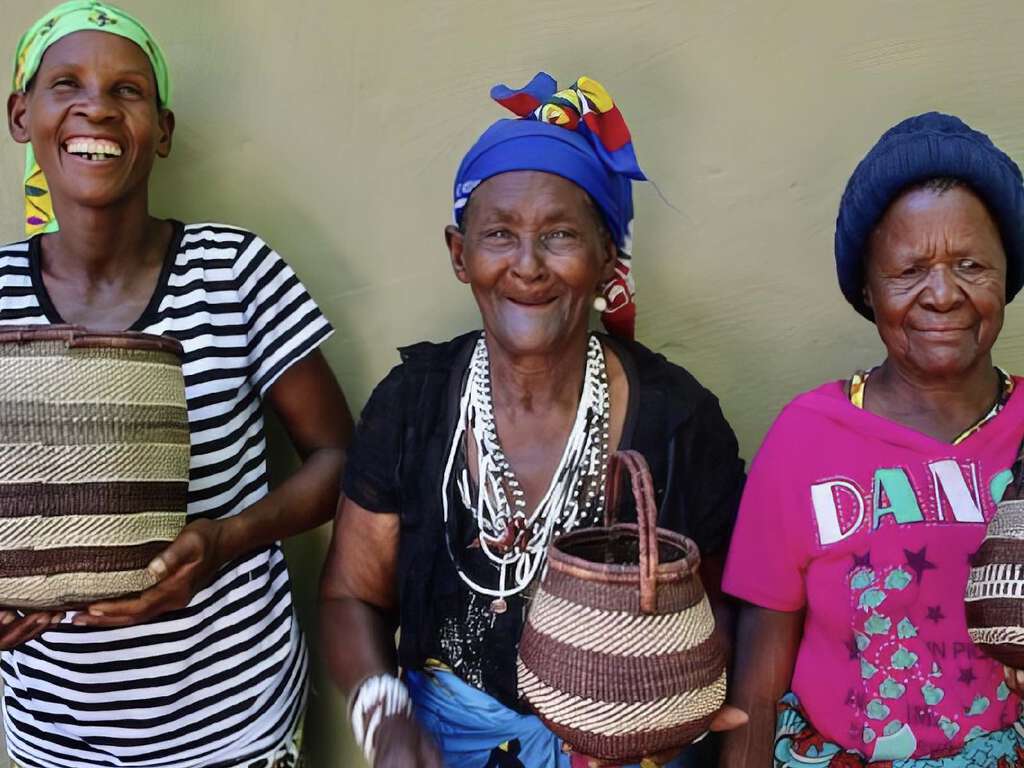
Weaving resilience - San women are adapting their livelihoods to climate change
The indigenous Khwe and !Xun San people living in Bwabwata National Park have few sources of income and are reliant on subsistence agriculture, which is highly vulnerable to climate change. Basket weaving is a traditional practice that offers a climate resilient way of generating cash income. WWF Namibia and Omba Arts Trust have therefore partnered with San women living in Bwabwata to weave and sell their baskets on national and international markets. These women are taking the opportunity to improve their livelihoods and support their families with both hands – literally and figuratively.
Read more...
Topics...
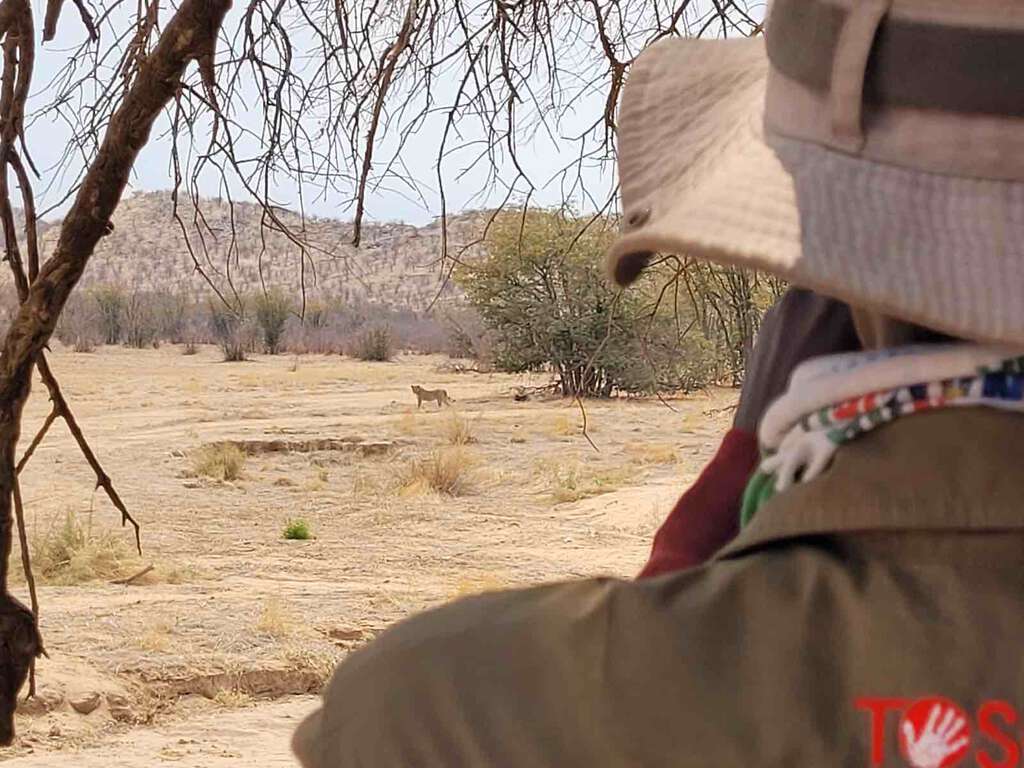
SMART Rangers for the conservation of desert-adapted lions
The Lion Rangers programme in the Kunene Region is one of the key strategies for reducing human-lion conflict by involving affected communities in lion conservation. The Lion Rangers were recently trained to use the SMART mobile application to track their patrols and record lion sightings, which are used for conservation and research purposes. Over the last 18 months, 47 Lion Rangers have patrolled 279,854 km, of which 87,678 km were covered on foot. These monitoring efforts are linked to detailed analyses to identify conflict hotspots and alert response teams to prevent conflict as much as possible.
Read more...
Topics...
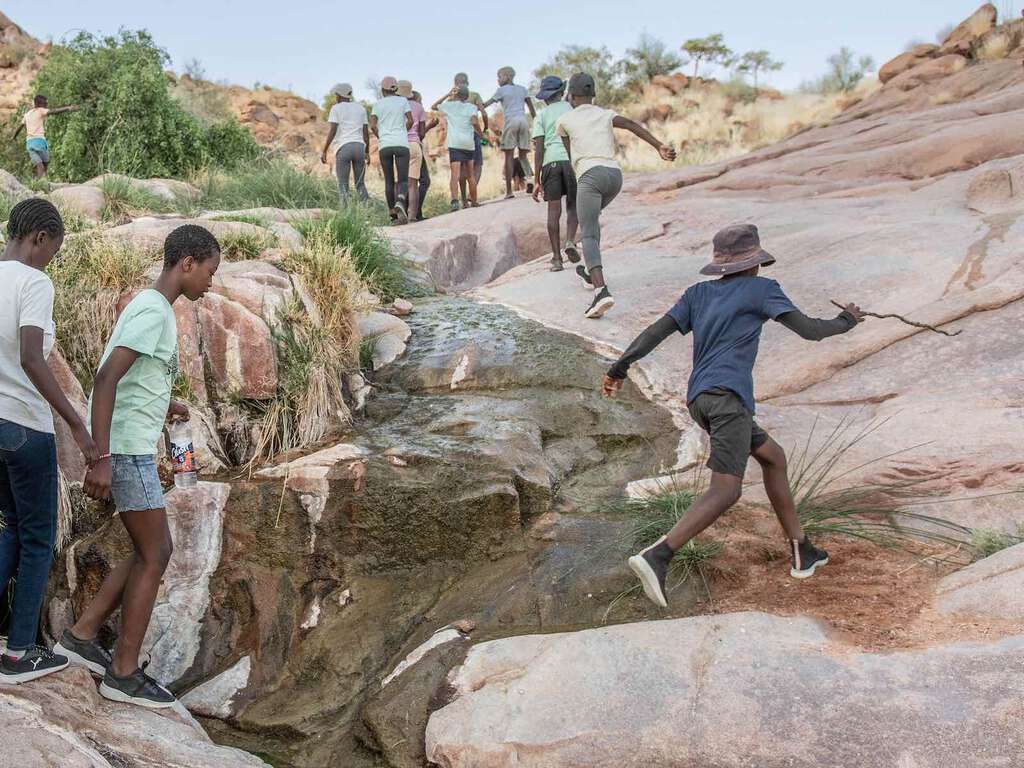
Inspiring action and creating change among rural Namibian primary school learners and their communities
Elephant Human Relations Aid
Children from rural areas in Namibia may live around wildlife, but few get the chance to really learn about the environment and how they can play a role in conservation. The Elephant-Human Relations Aid's new environmental education centre is changing this situation in the Kunene and Erongo Regions where desert-adapted elephants occur. Children visiting the centre learn about all aspects of the environment, while also getting a chance to view elephants safely and explore the natural surroundings along the beautiful Ugab River.
Read more...
Topics...

A triumph for giraffe conservation in Namibia
Translocating giraffes is a tricky process that requires skill and experience to ensure their safe capture, journey and release. The Giraffe Conservation Foundation recently coordinated a translocation of four Angolan giraffes from a private reserve in Namibia to two communal conservancies where they had previously occurred. This operation was used as a learning opportunity for young African veterinarians who come to Namibia to learn how to work with wildlife. It was also a cause for great celebration among community members who welcomed the return of these elegant giants to their conservancies.
Read more...
Topics...
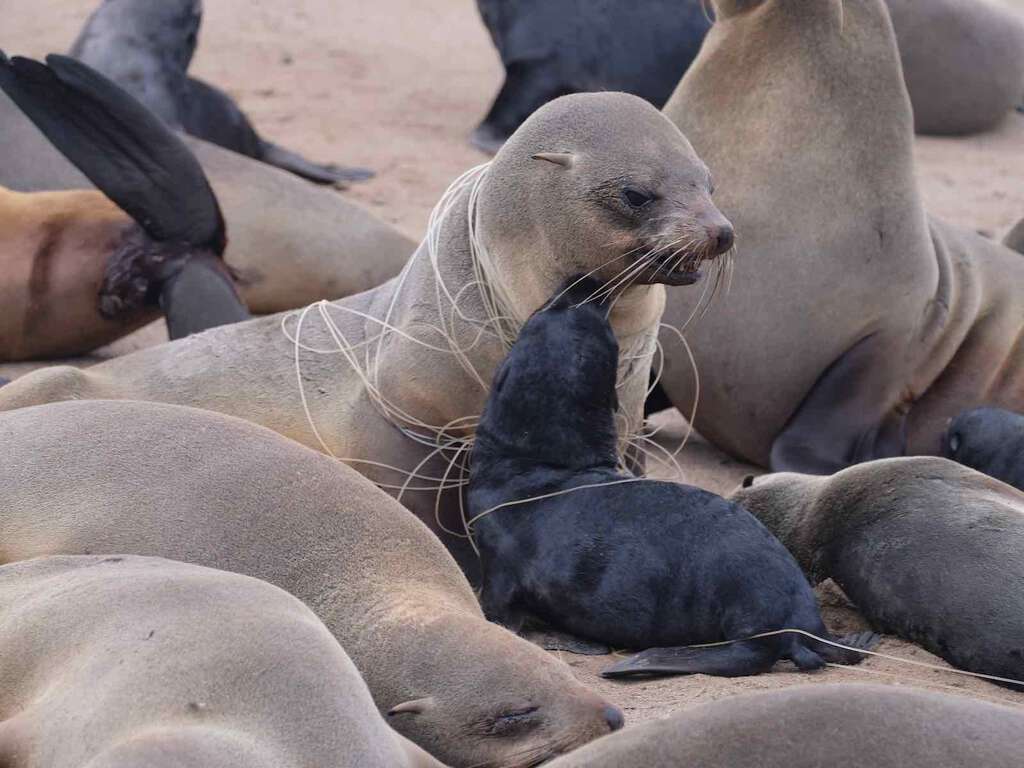
Giving plastic pollution a cute face
Plastic pollution in the ocean is a massive but largely unseen problem. The Cape fur seals off Namibia's coastline are among the many marine animals that get entangled by fishing line, nets and other plastic items floating in the sea. When Naude Dreyer started filming his efforts to rescue seals from entanglements and posting his videos on social media, he found huge public support for his efforts. Seeing an opportunity to fund their rescue mission for many more seals and create much-needed awareness about plastic pollution, Naude and Katja Dreyer started Ocean Conservation Namibia.
Read more...
Topics...
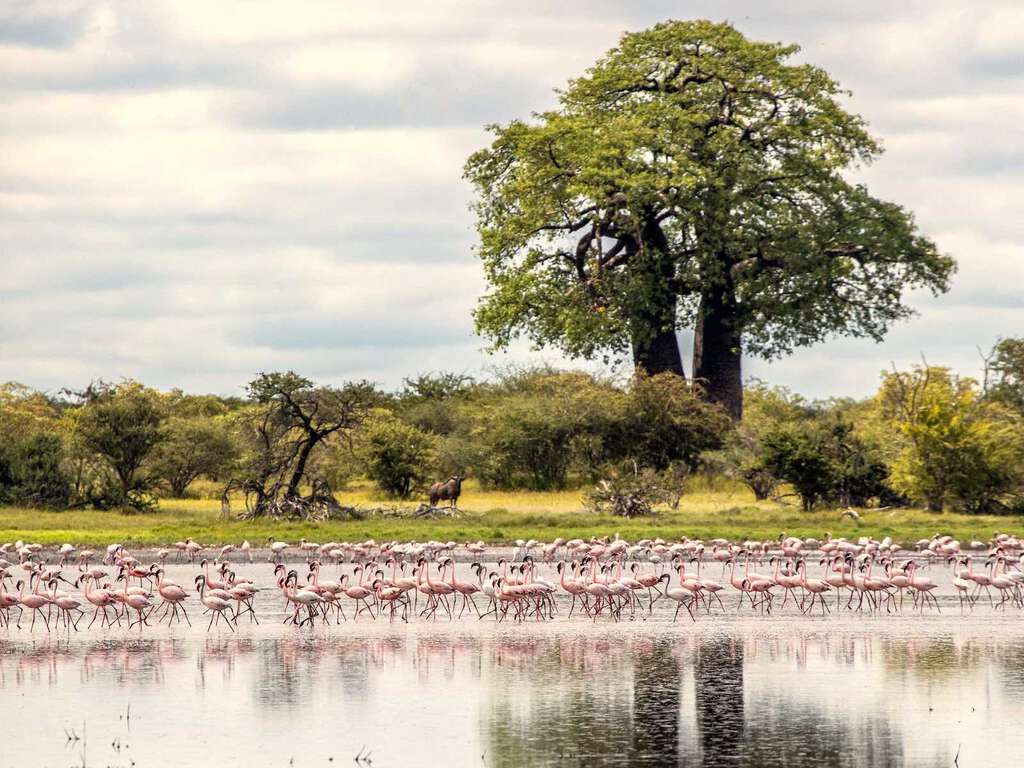
The Nyae Nyae Pangolin Project: benefitting people and pangolins
Pangolin Conservation & Research Foundation
The indigenous Ju/'hoansi San people living in Nyae Nyae Conservancy have several traditional beliefs about pangolins that prohibit killing this species, which is under severe threat throughout its global range due to poaching. The Pangolin Conservation and Research Foundation therefore established the Nyae Nyae Pangolin Project to employ local people to find and track the Temmink's ground pangolin occurring in this area. The project has established a permanent research camp and aims to employ one ranger in every village in the conservancy by 2028, while further providing many benefits to the broader community.
Read more...
Topics...

The story of Namibian bush: Turning problems into opportunities
Namibia Nature Foundation
Namibia is looking into ways to use encroaching bush species that are a symptom of degraded rangelands to develop an environmentally sustainable and economically valuable sector of the rural economy. Bush biomass can be used for multiple purposes, and the recently established National Dialogue Platform for Bush Resources seeks to explore these opportunities and share ideas on how to grow this sector. Experts who joined the platform discuss some of these options and the role of certification to promote a bush biomass sector that benefits people, the environment and the economy.
Read more...
Topics...
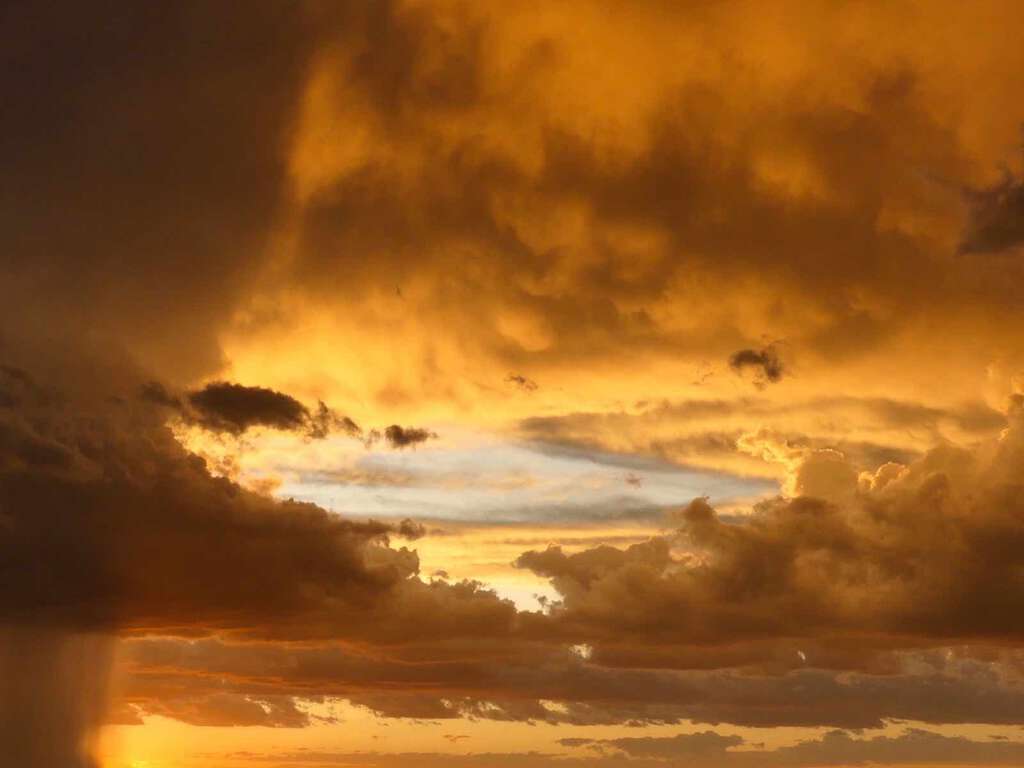
Namibia's climate and the need to adapt to an uncertain future
Namibia's highly erratic and unpredictable rainfall is predicted to get worse due to climate change. The 2022/23 rainy season exemplified this trend, as expert predictions for above average rainfall during this season were not realised. Collecting enough data to improve scientific predictions is critical for helping people and governments adapt to the changing climate. This is a key reason for the existence of SASSCAL - the Southern African Science Service Centre for Climate Change and Adaptive Land Management. SASSCAL collects and collates climate data for southern Africa that are made freely available for public use.
Read more...
Topics...
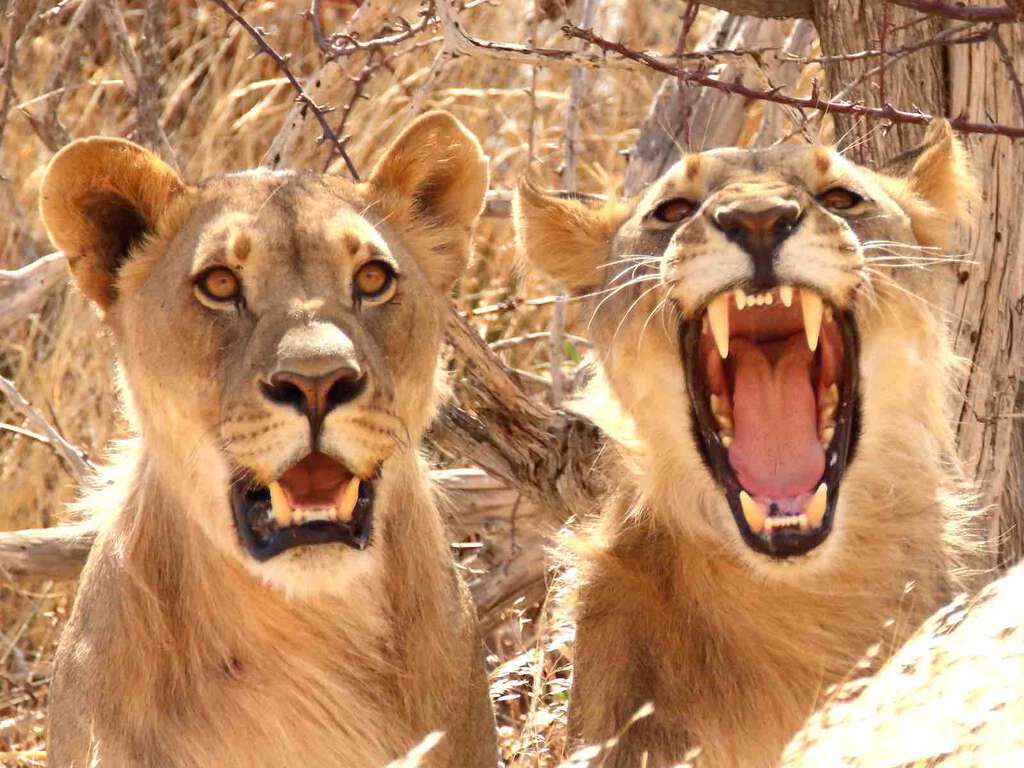
First-ever systematic lion population survey in northwest Namibia
The first ever total count of the lion population in the Kunene took nine weeks of dedicated effort by Lion Rangers, the Ministry of Environment, Forestry and Tourism, and several other partners. High quality photos of each lion's whisker spots serve to individually identify them for life and are used to produce lion ID cards. The final estimate of 57-60 lions is lower than previous estimates, but the population appears to have stabilised and the lions were found to be in good health. This survey provides a baseline for future monitoring and conservation action.
Read more...
Topics...
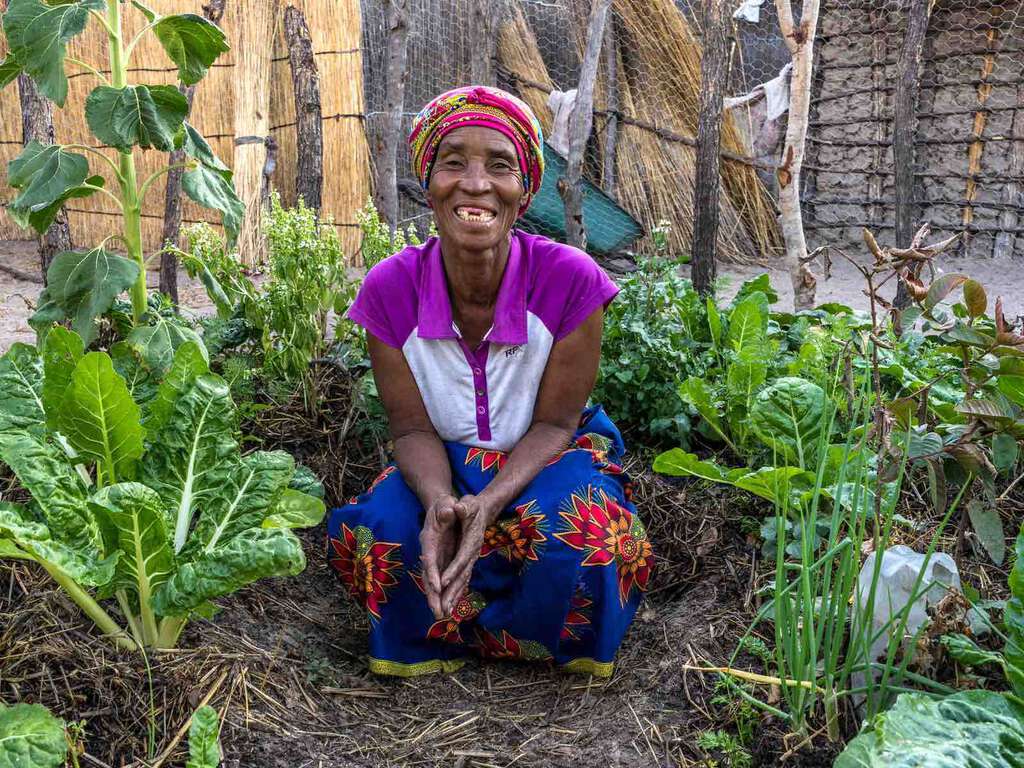
Conservation starts on a full stomach: Improving agricultural practices in communal conservancies
Namibia Nature Foundation
Agriculture and biodiversity conservation are often seen as competing sectors that are difficult to reconcile. The Namibia Nature Foundation’s Sustainable Agriculture Programme in northeastern Namibia seeks to change that by improving local agricultural practices. Working within communal conservancies, this programme trains farmers in organic agriculture, conservation agriculture and agroecology such that they can train and mentor others in their communities. Increasing agricultural productivity using these environmentally friendly methods improves food security and reduces land clearing for new crop fields, thus creating a win-win situation for biodiversity and farming communities.
Read more...
Topics...

The Greater Etosha Carnivore Programme
The Greater Etosha Landscape includes Namibia's flagship Etosha National Park and the private and communal lands around it. Large carnivores move through this landscape, often traversing the Park boundary and entering farms or private reserves. Conserving these animals requires an extensive research programme that covers the whole landscape and focuses on both the animal ecology and human behaviour sides of the equation. The Greater Etosha Carnivore Programme is a collaborative research effort that has already started to close some of our knowledge gaps and will continue to generate information that can be used to better conserve Etosha's carnivores.
Read more...
Topics...
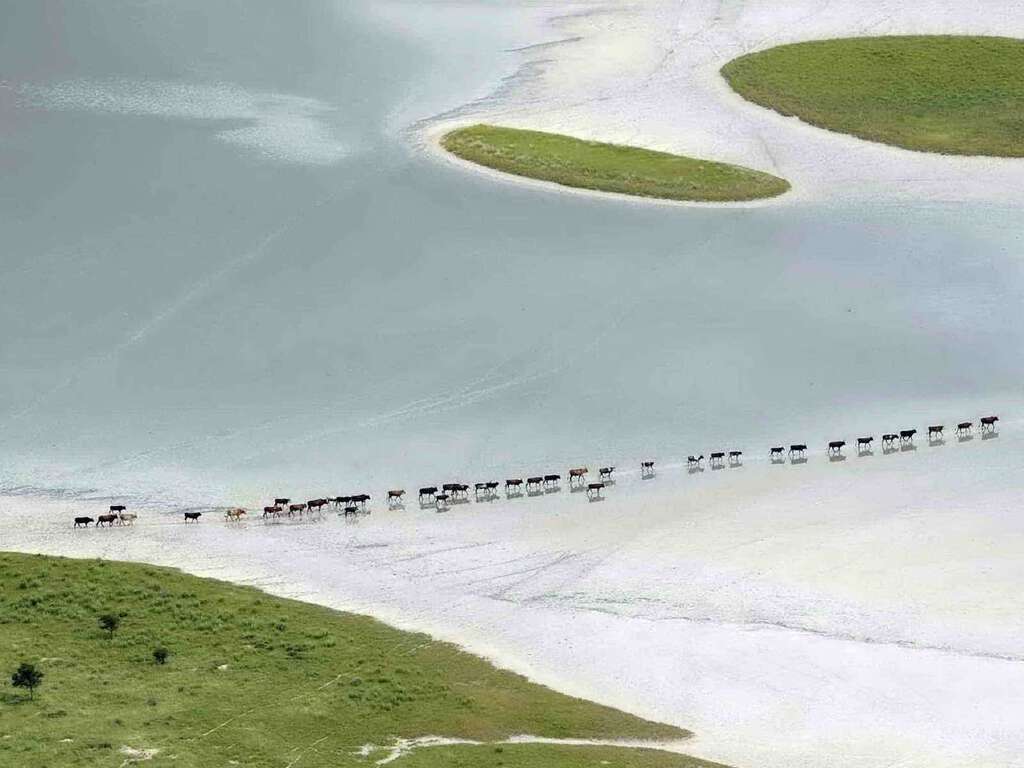
Towards healthy environments and decent livelihoods
Poverty and environmental degradation are interlinked problems that face Namibia and many other developing countries. John Mendelsohn draws on 25 years of research and experience to challenge the status quo of rural development projects and policies that perpetuate poverty and facilitate land degradation. He argues for sustainable urban development, peri-urban farming, land use planning and land tenure systems aimed at reducing pressure on natural resources and the environment. In this way, Namibia can simultaneously alleviate poverty and restore the natural environment for the benefit of all Namibians.
Read more...
Topics...

The Kavango-Zambezi transfrontier elephant survey
The Kavango-Zambezi (KAZA) Transfrontier Conservation Area hosts an estimated 227,900 African savannah elephants, the largest population in the world. This estimate was calculated after conducting a coordinated aerial survey over relevant parts of the five KAZA countries: Angola, Botswana, Namibia, Zambia and Zimbabwe. While population trends and mortality rates differ among the countries, the population in Namibia's part of KAZA is healthy and growing alongside areas of high human and livestock density. These results will feed into integrated elephant management plans for this globally important conservation area.
Read more...
Topics...
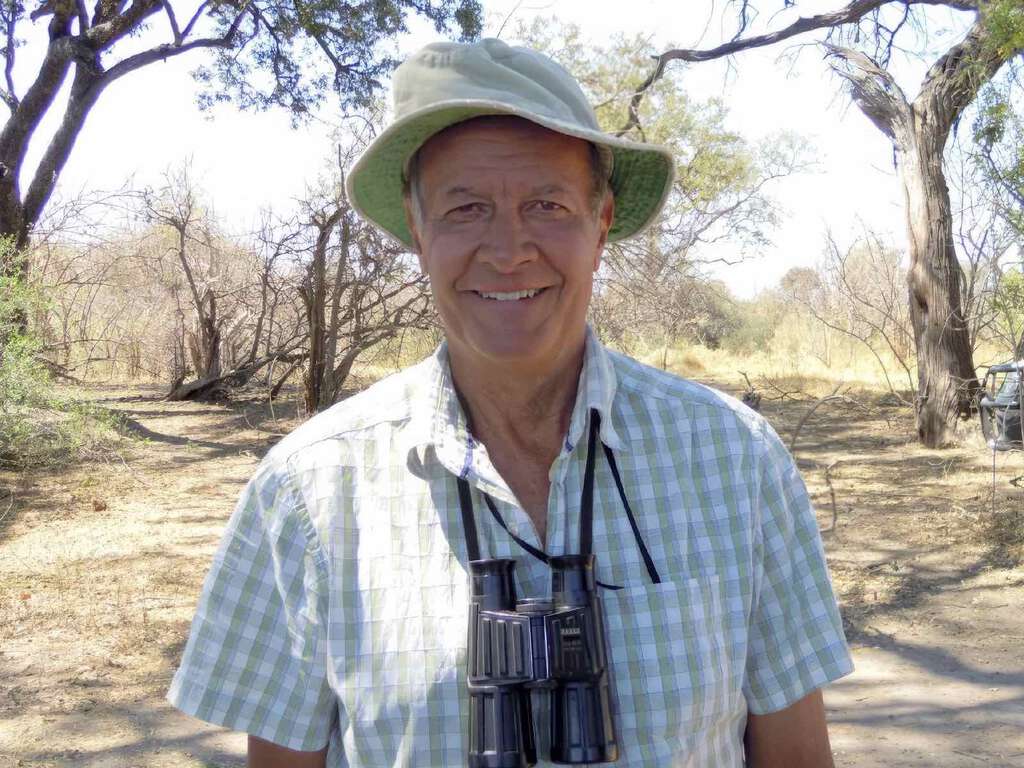
Tribute to David Graham Ward, Namibia's champion citizen scientist
Namibian Chamber of Environment
Namibia bid farewell to one of its leading conservationists this year. While Dave Ward travelled across the country as part of his work in communal conservancies, he kept a sharp eye out for birds and other species of conservation significance. His detailed records of the species he sighted represent a significant contribution to our knowledge of the status and distribution of many bird, reptile, amphibian, butterfly and invasive alien plant species. These records are part of his legacy to conservation, which includes many young Namibians and conservancy employees he trained and mentored for over 20 years.
Read more...
Topics...

Namibia's elephant numbers confirmed by regional aerial survey
Namibian Chamber of Environment
An elephant survey covering 60% of the massive 519,912 square kilometre Kavango-Zambezi Trans-frontier Conservation Area was completed in late 2022 and the results released in 2023. This survey includes the northeastern part of Namibia and parts of four neighbouring countries. These results confirm that the Namibian elephant population is healthy and stable, while the areas surveyed also host numerous other wildlife species in protected areas and communal conservancies.
Read more...
Topics...

How climate change threatens the coexistence between communities and the Kunene highland elephants
Namibian Chamber of Environment
A small sub-population of elephants living in the Kunene highlands have adapted remarkably well to traversing rocky, mountainous terrain where few other elephants would tread. The people of Orupupa Conservancy have managed to coexist with elephants until the recent drought increased human-elephant conflict, which is a harbinger of worse droughts to come due to climate change. The community game guards and a new funding partner provide hope for a future of coexistence despite the changing climate.
Read more...
Topics...

Can conservation and agriculture work together for inclusive regional development in the Zambezi Region?
University of Cologne/London School of Economic and Political Science
Wildlife conservation and agriculture are ordinarily seen as opposing sectors, since wildlife can damage crops and livestock, while conservation zones usually exclude farming. The impact of COVID-19 caused conservancies in the Zambezi Region to re-examine their relationship with the agricultural sector and has opened some doors for future collaboration between these sectors. Carolin Hulke researched the needs of farming conservancy members and how their conservancies can assist them to create a broader base of beneficiaries from community-based natural resource management.
Read more...
Topics...

Conservancies in Namibia need to look beyond tourism to drive rural development
University of Cologne
Communal conservancies in Namibia rely heavily on photographic and hunting tourism income to fund their activities and generate benefits for their members. However, this income is not enough to provide substantial returns for all rural households living in conservancies. In this first of two articles, Dr Linus Kalvelage shares insights from his research in the Zambezi Region on how much money from tourism remains in the region and where it goes.
Read more...
Topics...

How to increase the contribution of community conservation to rural development in Namibia
University of Cologne
Dr Linus Kalvelage uses insights from his research on tourism in communal conservancies in the Zambezi Region to suggest ways to improve the current state of community-based natural resource management in Namibia. He explores options for increasing income from wildlife products and using current tourism revenue to invest in other economic sectors, thus creating a more resilient regional economy.
Read more...
Topics...

Getting to know Namibia's new marine visitor: Eight things you didn't know about Green Sea Turtles
Namibian Chamber of Environment
Did you know that a green turtle was found nesting on Namibia's shores for the first time ever in 2020? This is exciting news since this endangered species is threatened in many of its nesting sites elsewhere on the west coast of Africa. The Kunene River Mouth where this turtle was found is protected and remote, thus reducing the chance of humans disturbing turtle nests. Here are eight things you should know about this species of sea turtle.
Read more...
Topics...

How do you like your meat? Unleaded, please!
Lead is a toxic substance to humans and all other biological organisms, yet it is still used in bullets and fishing sinkers. Lead bullets fragment into hundreds of tiny pieces upon impact. These fragments pose a threat to game meat consumers, including people and scavenging species like vultures. Namibian stakeholders are working together to switch to lead-free bullets as a matter of urgency for the sake of human health and the environment.
Read more...
Topics...

The plot thickens – Euphorbia bushes do not cause fairy circles
Following the recent revival of the theory that Euphorbia bushes cause fairy circles in the Namib Desert, a team of researchers revisit dead Euphorbia bushes after 40 years to show that this is not the case. Based on this and other evidence, they suggest that neither Euphorbias nor termites explain the phenomenon of fairy circles.
Read more...
Topics...

Can we take the Angolan giraffe back to Angola?
Despite their name, the Angolan giraffe no longer occurs in Angola, as it was eradicated during the 40-year conflict in that country. Hope remains, however, as Namibia's population of Angolan giraffe is thriving. Jackson Hamutenya investigated whether or not Iona National Park in Angola will be suitable for a giraffe introduction from Namibia. Read all about his findings here.
Read more...
Topics...

Brandberg Lion Attack – a minor drama in a complex conservation landscape
When a desert-adapted lion attacks Helge Denker in his tent near Brandberg, it sets him thinking about the complex situation these lions find themselves in today. Lions are coming ever closer to human settlements after the recent drought followed by scattered rainfall that dispersed their few remaining prey. Communal conservancies bear the brunt of the resulting conflict, but is there a way to create real benefits from these lions? Managing the situation will be difficult, but today we have better knowledge and systems in place to handle it.
Read more...
Topics...

Spotty cats, solid data – Namibia's first national cheetah survey
Leibniz Institute for Zoo and Wildlife Research of Berlin
The Namibian cheetah population is critical to the long-term survival of this species. This nation-wide survey based on thorough understanding of cheetah movement ecology is therefore a highly welcome development. A more accurate population estimate will be valuable for guiding future cheetah conservation efforts.
Read more...
Topics...

Climate Change in Namibia Part 1: Defining the Terms
Namibian Chamber of Environment
The science and politics of climate change are complex and could be overwhelming for the interested layperson. In this first article in the lead up to the United Nations Climate Change Conference of Parties in Glasgow this year, we unpack some of the most common terms used in this field.
Read more...
Topics...

Climate Change in Namibia Part 2: Current and Projected Changes
Namibian Chamber of Environment
Namibia is among the most vulnerable countries in the world to the effects of climate change. Climate projections reveal that Namibia will become hotter faster than most other countries, with subsequent increasing frequency of drought conditions. Climate change will intersect with how the land is used and managed to determine Namibia's future.
Read more...
Topics...

Climate Change in Namibia Part 3: National Actions
Namibian Chamber of Environment
World leaders, including Namibia's President Dr Hage Geingob, are currently attending the 26th United Nations Climate Change Conference of the Parties. In this third article on climate change, we outline a plan that the government can implement to both mitigate and adapt to climate change. Adapting to climate change is particularly important to reduce the vulnerability of our rural communities.
Read more...
Topics...

Climate Change in Namibia Part 4: Local Actions
Namibian Chamber of Environment
In the final article of our series on climate change in Namibia, we consider a few of the ways that rural Namibians can adapt to projected climate conditions. These include the sustainable harvest of bush, agricultural diversification and conservation agriculture. Developing a strong wildlife economy and markets for valuable non-timber forest products will also have positive impacts on rural livelihoods and biodiversity.
Read more...
Topics...
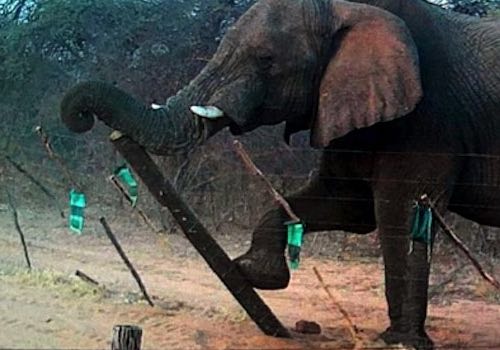
The Story Behind the Namibian Elephant Auction
Namibian Chamber of Environment
The recent proposal by the Ministry of Environment, Forestry and Tourism to auction 170 elephants has been met with harsh criticism and many unsubstantiated accusations. This article provides the historical and current context required to understand this decision and calls for support to help Namibian farmers coexist with elephants in future.
Read more...
Topics...

It's not too good to be true – Elephants are thriving in Namibia
Namibian Chamber of Environment
African savannah elephants are declining in many countries, but not in Namibia, where their numbers are increasing. This good news has been met with some scepticism and questions have been raised about how elephants are counted in the country. Here, the methods used for counting elephants using aerial surveys are described and the oddly controversial issues surrounding these counts are addressed.
Read more...
Topics...

Understanding the Kunene Wildlife Numbers
Namibian Association of CBNRM Support Associations (NACSO)
Community conservation in the Kunene Region has been criticised due to recent wildlife declines reported by the Namibian Association of CBNRM Organisations (NACSO). In response to the critics, NACSO explains how the data are collected and outline possible reasons for the decline. They put these numbers into context and reveal why the CBNRM programme remains resilient despite the drought and COVID-19.
Read more...
Topics...

Namibian Pangolin Working Group: collaboration for conservation success and World Pangolin Day
Namibian Pangolin Working Group
Pangolins are severely threatened by the illegal trade for their scales and parts, yet their ecological needs are poorly understood. The Namibian Pangolin Working Group was established in early 2020 to coordinate and drive efforts to reduce illegal trade, rehabilitate and release individuals seized from poachers and traffickers, conduct priority conservation research, and create awareness of the pangolin's plight in Namibia.
Read more...
Topics...

Recognising community rangers in honour of Garth Owen-Smith
In the early 1980s Garth Owen-Smith joined forces with traditional leaders and rural communities in Namibia to stop poaching. Together they did something unthinkable at the time - employ people from within rural communities to look after wildlife on behalf of their people. Community rangers thus sit at the heart of Namibia's community-based conservation success story. A new annual awards event for community rangers is thus a fitting memorial to this conservation giant.
Read more...
Topics...

Why the Namibian moratorium on sardine fishing must continue
The sardine fish stock off Namibia's coastline collapsed by 99.5% between the 1960s and 2015, prompting the Ministry of Fisheries and Marine Resources (MFMR) to impose a three-year moratorium on sardine fishing in 2018. It is now time to review the moratorium, but it is clear that this fish stock has not recovered sufficiently to sustain any level of commercial fishing. Three seabird species provide ideal indicator species for sardine stocks, and none of these have recovered. Keeping the moratorium in place until the ecosystem recovers is therefore essential.
Read more...
Topics...

Solving the fairy circle mystery using scientific evidence
The Fairy Circles of the Namib Desert are an excellent subject for scientific research. Scientists have posed several theories about what causes these bare patches of sand and maintains them over time. Dr Stephan Getzin weighs in on the subject based on many years of field research, data collection and analysis. Unconvinced of the sand termite and Euphorbia hypotheses, he argues for plant self-organisation.
Read more...
Topics...
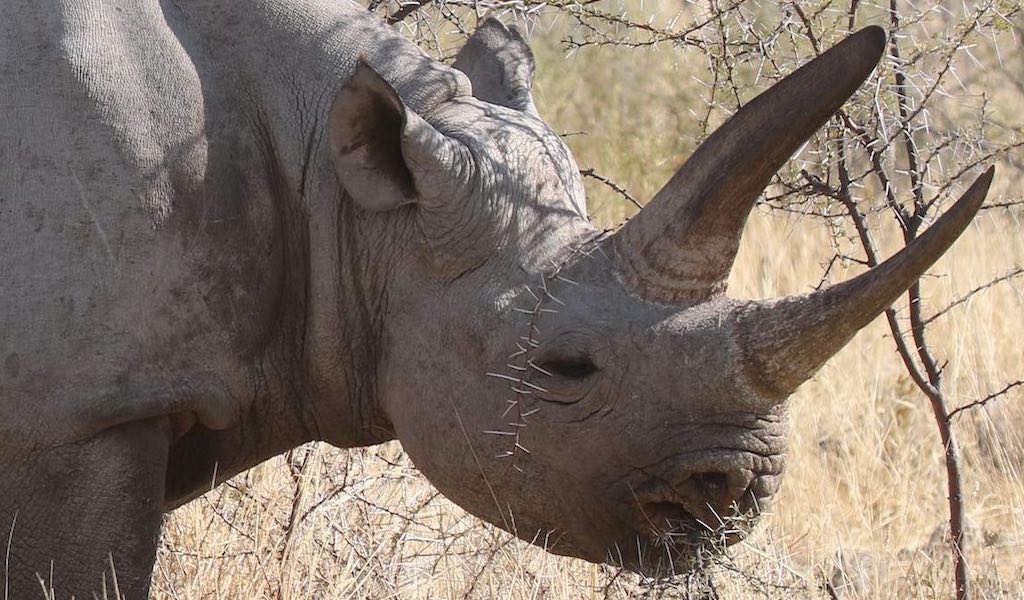
Namibia is taking the fight to poachers and traffickers
Combating wildlife crime requires a multi-pronged, organised approach that brings together monitoring, anti-poaching, law enforcement and judiciary efforts. Several projects are happening concurrently in Namibia to address all of these aspects of the fight against wildlife crime. Namibia is making strides towards preventing poaching from occurring, deterring potential poachers and shutting down illegal trafficking routes.
Read more...
Topics...
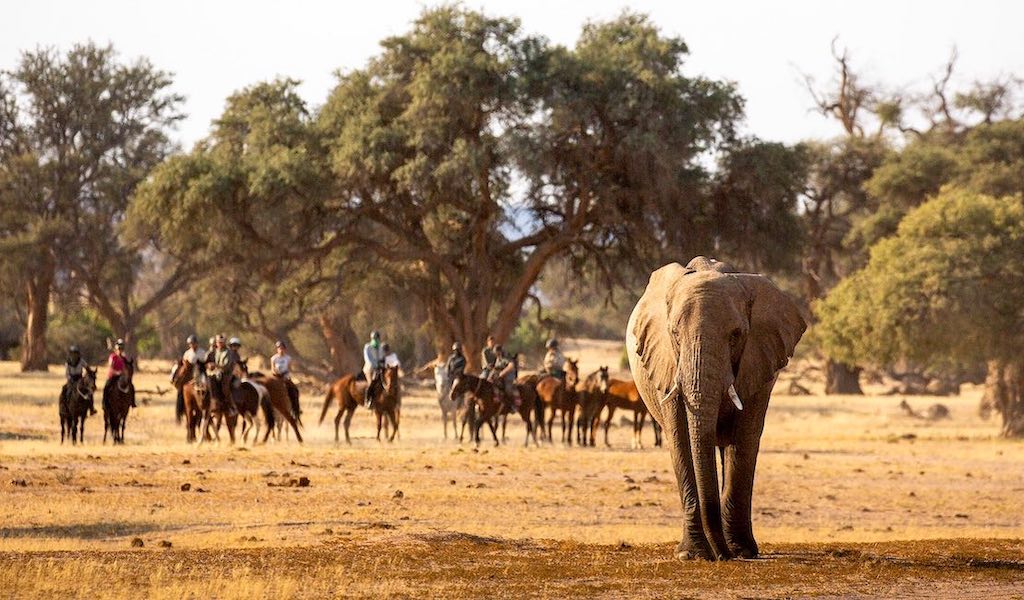
Bridging the gap between tourism and conservation: A decade of dreams, challenges and achievements
Tourism Supporting Conservation Trust (TOSCO) is celebrating 10 years of contributing to conservation in Namibia. TOSCO has come a long way since its humble beginnings in 2012 when one tour guide had a dream: to help communal conservancies address their many challenges with funding from the tourism industry. Despite the impact of COVID-19, TOSCO is still going strong and has a new Director and vision for the future.
Read more...
Topics...

What drives human-wildlife conflict in communal conservancies?
Human-wildlife conflict poses a major challenge to Namibian community conservation efforts. As part of her PhD research, Marina Tavolaro collected data on livestock losses, crop raiding, infrastructure damages and human attacks across 79 conservancies in Namibia during 2001-2019. She established which species cause the most damages in which parts of Namibia, which seasons are the worst for conflict with different species and what other environmental factors were linked with high levels of human-wildlife conflict.
Read more...
Topics...

Namibian Teachers become pioneers of Education for Sustainable Development
Namib Desert Environmental Education Trust
Education for Sustainable Development is crucial to conservation. Children need to understand the importance of the environment and find out what they can do in their daily lives to reduce their impact and improve the state of the natural world. The most effective way to reach children is through passionate, inspired and empowered teachers. Find out how the Namib Desert Environmental Education Trust is creating a network of such teachers across Namibia.
Read more...
Topics...

Evaluating the Results of Namibia's Elephant Auction
Namibia's Ministry of Environment, Forestry and Tourism has auctioned 37 elephants, 22 of which were exported to captivity in the United Arab Emirates. This article provides the basic facts of the matter and evaluates the consequences of this decision as it relates to elephant conservation, welfare and legality.
Read more...
Topics...

Investigating a little-known biodiversity hotspot
Enviro Science
South of the small town of Warmbad in Southern Namibia lies a little-known biodiversity hotspot located where the Succulent Karoo and Nama Karoo biomes meet. Antje Burke reports on her plant survey in this hotspot within the Orange River-Karoo Conservation Area, which comprises several private farms that are managing the land for conservation purposes. What she found exceeded even her most optimistic expectations - high plant diversity and several key populations of rare and protected plant species.
Read more...
Topics...

Investigating human-wildlife conflict beyond conservancies
Most of the research on human-wildlife conflict in Namibia has been done on communal conservancies. Herman Aindongo's research into conflict on non-conservancy land therefore helps to fill some of the gaps in our knowledge. He found that farmers outside conservancies experience significant levels of conflict and are therefore in need of assistance.
Read more...
Topics...

//Huab Conservancy prepares to take Minister Pohamba Shifeta to court
Mining activities in the //Huab Conservancy are threatening endangered black rhinos and have caused the only lodge in their area to shut down. The Environmental Impact Assessment was incomplete and ignored the impacts of mining on rhino-based tourism. Despite repeated attempts to stop the mining project and appeals to the Minister of Environment, Forestry and Tourism (MEFT) to intervene, nothing has happened. The conservancy is therefore preparing to take MEFT to court to fight for their livelihoods and the rhinos that are part of the MEFT custodian programme.
Read more...
Topics...
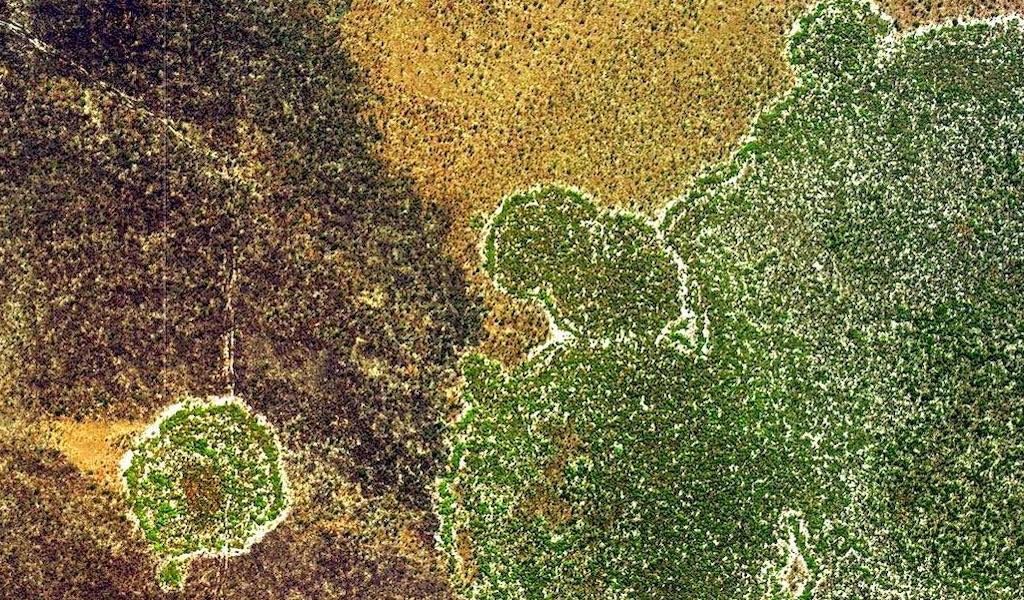
About fairies of all sizes
While the fairy circles of the Namib are well known and hotly debated, there are similar natural phenomena found in Namibia and Angola that have received much less attention. Dubbed in this article as "fairy spheres" and "fairy forests", the authors suggest some potential causes for these rounded areas and suggest directions for further research on how such shapes are created in nature.
Read more...
Topics...

The Lions of Etosha: A Brief History
Namibian Chamber of Environment
Etosha National Park has a long history that includes changing boundaries, building a fence and establishing permanent water holes. Etosha's lions have adapted to the changing conditions and survived in the face of prey declines and persecution due to human-wildlife conflict. This article unpacks the history of lions in Etosha drawing from a scientific paper in the Namibian Journal of Environment.
Read more...
Topics...

The Role of Rolling Zebras in the Desert Ecosystem
Did you know that a rolling zebra makes a measurable impact on the desert environment? Hartmann's mountain zebras are near endemic to Namibia, where they occur widely on the western escarpment. Their habit of rolling in the dust creates important microhabitats for plants and animals. A new scientific study reveals how this works.
Read more...
Topics...

Have We Learned Anything from Fishrot?
The fishrot scandal revealed major flaws in the way Namibian marine fisheries are governed, particularly relating to the allocation of fishing quotas. The subsequent overfishing has left key economically and ecologically important fish stocks severely depleted, with severe consequences for livelihoods and marine conservation. The management of fisheries must change fundamentally if Namibia is to prevent future scandals of this nature and restore the marine ecosystem on its shores. Dr Chris Brown proposes a way forward for improved fisheries management.
Read more...
Topics...

Announcing the Winners of Namibia's First GOSCARS
The inaugural GOSCARs (Grass-Roots Owen-Smith Community Rangers Awards) event was held on the 7th of April to recognise the commitment and hard work of four conservancy field workers. This event is held in honour of the late Garth Owen-Smith, who was among the early pioneers of community conservation in Namibia. This year's winners include two rhino rangers, a lion ranger and a Field Officer who continue are dedicated to carrying out their duties and mentoring others in the field.
Read more...
Topics...

It's about time, not distance – flying for rhino and elephant conservation
Flying in a light aircraft over the spectacular desert landscape of the Kunene Region can be hazardous. Nonetheless, pilot Conrad Brain spent several weeks making regular flights over the Christmas period on the lookout for potential rhino poachers and elephants. He describes the flying experience and his part of this joint operation to protect Namibia's special desert-adapted species.
Read more...
Topics...

Fishing with lions: How Namibian anglers and desert-adapted lions share the Skeleton Coast
Namibian Chamber of Environment
The desert-adapted lions in north-west Namibia have rediscovered the marine food resources along the Skeleton Coast, which is great news for their long-term survival. Their coastal movements created conditions for a different kind of human-lion conflict, however, as sea fishermen use the same area during the fishing season. Constant monitoring and awareness campaigns during the 2022/23 fishing season kept both lions and fishermen safe.
Read more...
Topics...

Big birds, big power lines, big problems
Around the world, birds pay the consequences for the human need for electricity. The large power lines that transmit electricity in Namibia are no different. Big birds like kori bustards, Ludwig's bustards and cranes are particularly hard hit. While there are some effective ways to reduce mortality for cranes, there are no current solutions for bustards. Using less electricity or switching to solar power are some of the ways you can help.
Read more...
Topics...
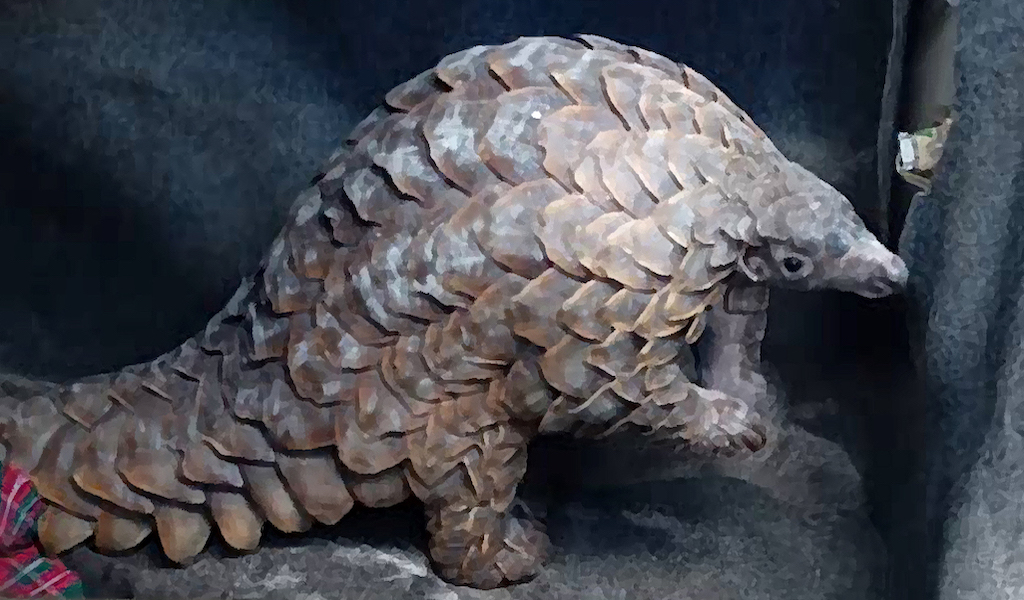
Powerful deterrents against wildlife crime
Wildlife crime in Namibia is being tackled on many fronts. More anti-poaching efforts, better investigations and more stringent penalties are bearing fruit by reducing poaching rates and increasing arrests. Special wildlife courts were set up to deal with the large backlogs in cases involving wildlife crime. The sentences passed by these courts have sent a strong message: wildlife crime in Namibia does not pay.
Read more...
Topics...

The battle against invasive alien species in Namibia
Invasive alien plants cause serious environmental damage in Namibia. They smother native vegetation, take up valuable land, hurt animals, pollute water courses and diminish groundwater. The newly established Invasive Alien Working Group is tackling this problem on several fronts: manual removal, biological control, public awareness and mapping current problem species. Find out how you can help.
Read more...
Topics...
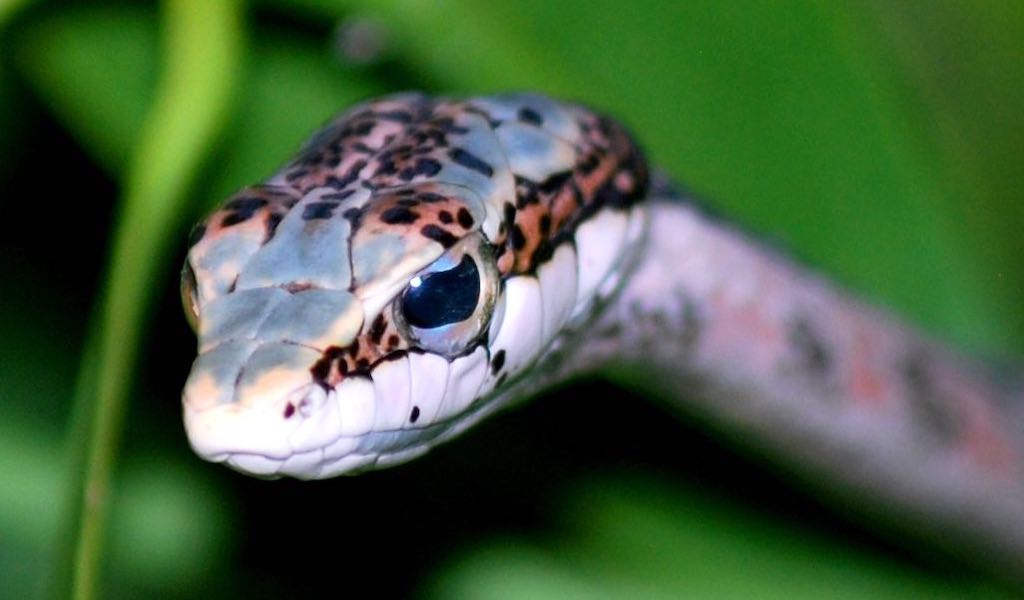
Citizen science in Namibia
You can become a citizen scientist by downloading the Atlasing in Namibia mobile application, which allows you to take records of mammals, snakes and other reptiles, frogs and toads, butterflies, breeding birds and plants in Namibia. The information you provide is then used to inform conservation assessments, actions and infrastructure development. Become part of conservation by downloading the app.
Read more...
Topics...

Seeing lions in a different light - Lion Rangers and community conservation
Whether you see Namibia's desert-adapted lions as iconic, beautiful and threatened with extinction, or fearsome, destructive and increasing depends on who you are and where you live. The Lion Rangers programme was created to address human-lion conflict and help farmers in the Kunene Region to see lions in a different light using both science and local knowledge.
Read more...
Topics...
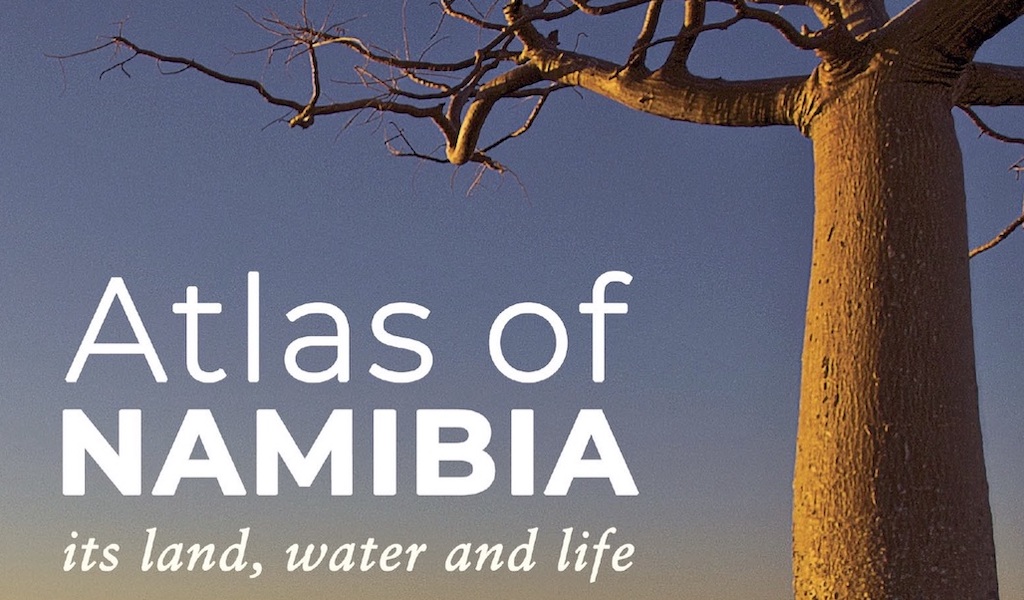
Getting to know Namibia with two eye-catching new atlases
In 2022, two new Atlases were released - one for adults and one for children. The nearly 400-page Atlas of Namibia: its land, water and life provides the very latest information on nine major aspects of the country, complete with hundreds of graphs, maps and photographs. My Children’s Picture Atlas of Namibia is a 40-page visual journey through Namibia that is suitable for use in the home and at school. This is Namibia, for all ages.
Read more...
Topics...
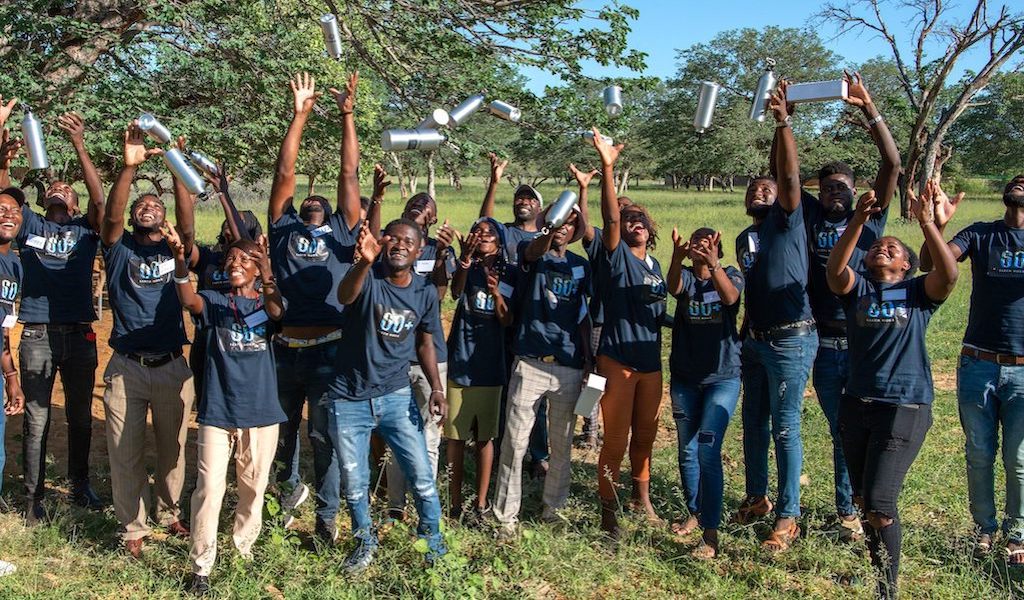
Namibian youth in conservation are ready to shape our future
Under the 2022 Earth Hour theme Shape Our Future, 57 young adults from 23 communal conservancies were trained and empowered to become stewards of nature and create awareness among their communities. In just a few months, they recorded 380 biodiversity records, held meetings and events in their conservancies and started a national Youth in Conservation movement that has a bright future.
Read more...
Topics...
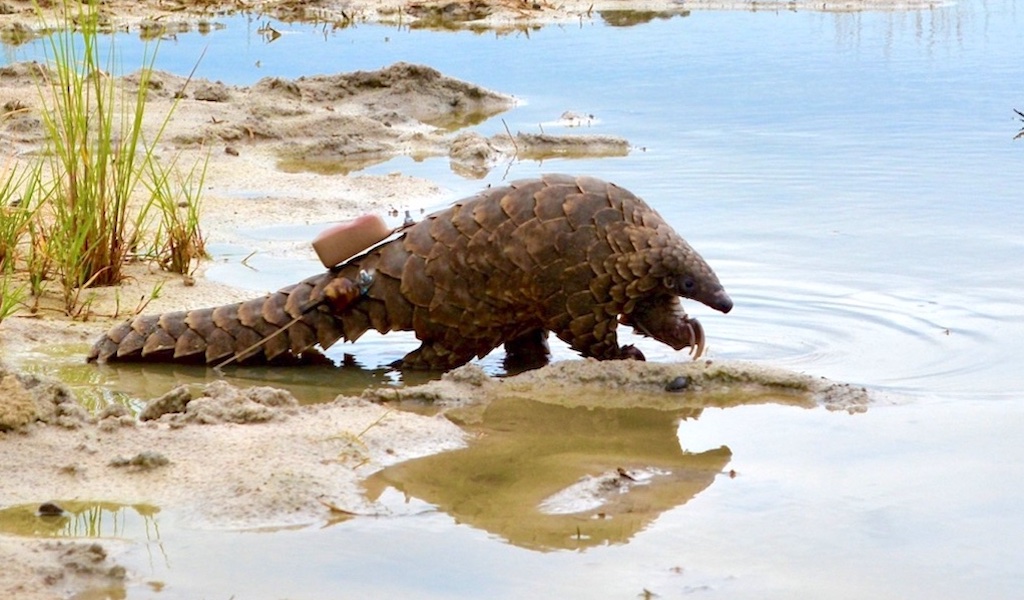
Trafficked pangolins get a second chance, but do they survive?
Pangolins that are caught up in the illegal wildlife trade have been removed from their home ranges, traumatised and starved. Some rescued pangolins can be restored to health and released into the wild, but that is not the end of the story. Data from released pangolins reveal that survival is far from certain. Studying the movements of released individuals can help improve the success rate of these efforts.
Read more...
Topics...
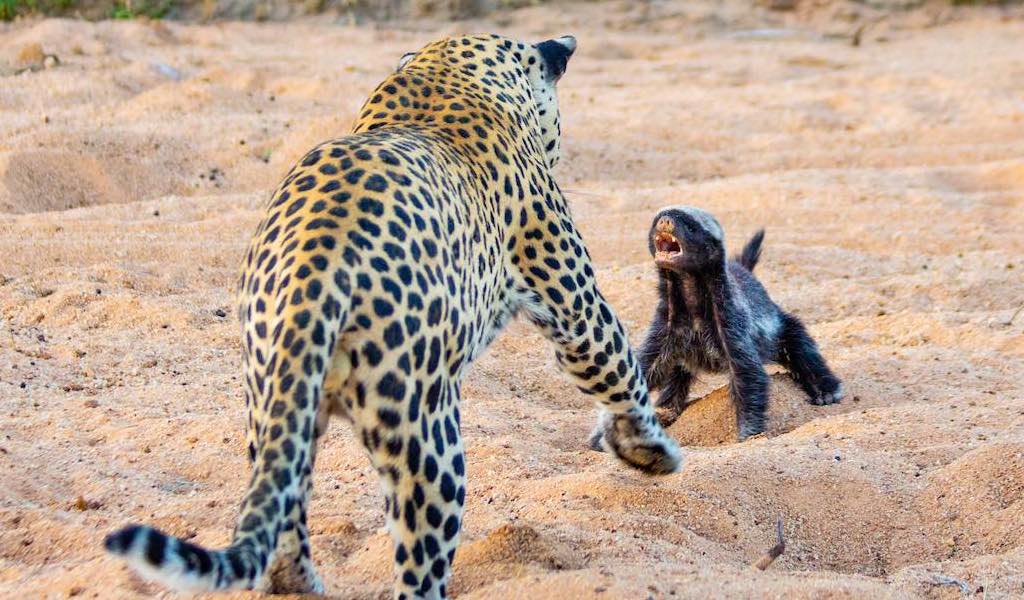
The next steps for carnivore conservation in Namibia
A new publication on the conservation status of Namibia's 34 terrestrial carnivore species is now available to the public. Representing the combined effort and knowledge of 25 species assessors, 30 contributors and 31 reviewers, this book provides the most up to date information on carnivores in Namibia. The key threats to species of conservation concern and potential actions to address these threats and improve the conservation status of Namibia's are highlighted here.
Read more...
Topics...
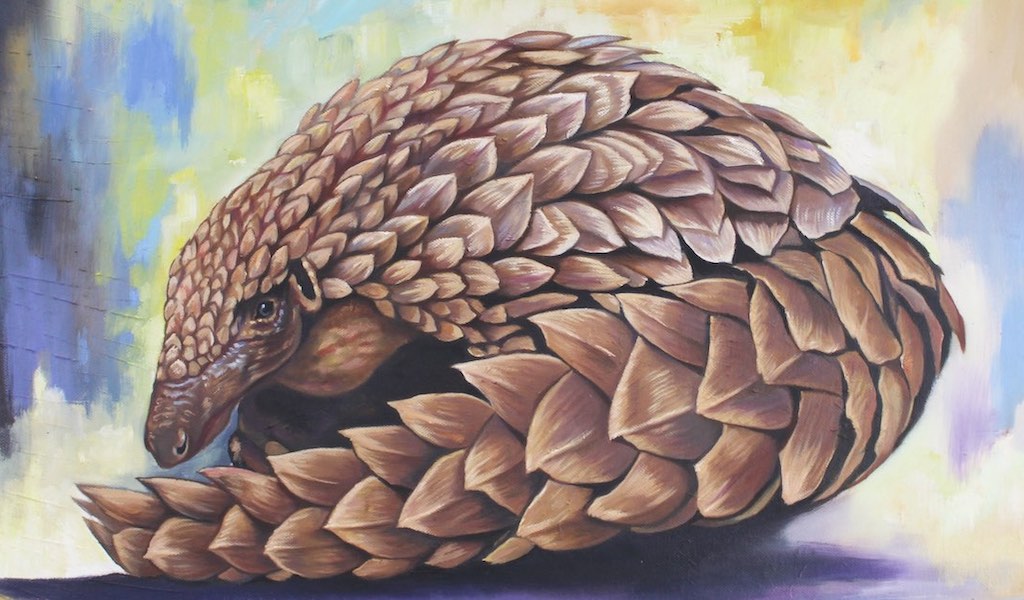
Let every scale count - Using creativity for pangolin conservation
Pangolin conservation requires a whole of society approach. Everyone must care enough about the pangolin to report poaching or trafficking when they see it. Yet not many people know much about this species. This is where art can play a leading role. A creative writing competition for the youth and an art exhibition for adults were both used to get the message out about pangolins.
Read more...
Topics...
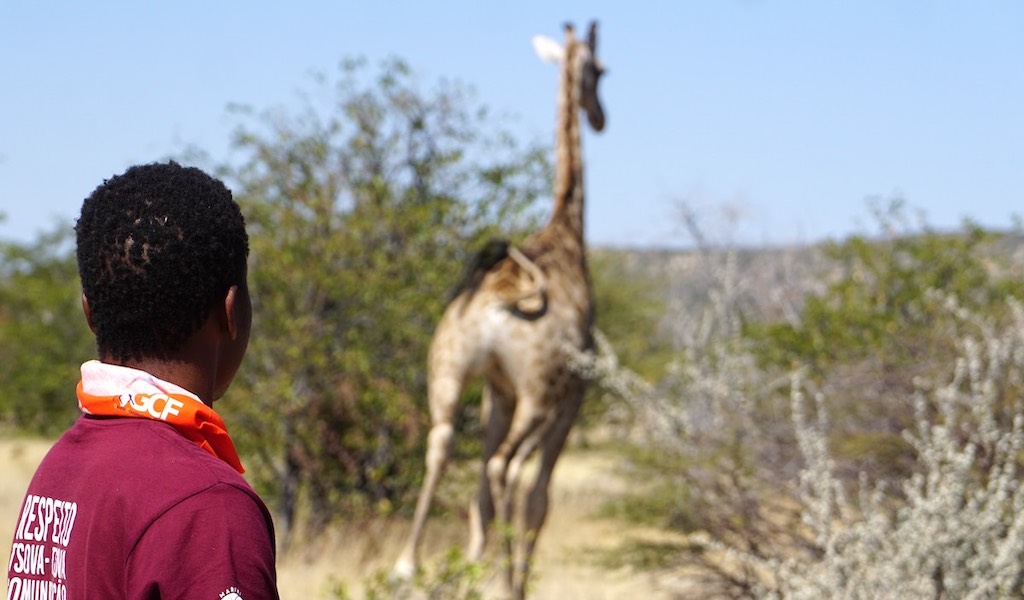
Taking African wildlife veterinary medicine to new heights
Wildlife veterinary medicine is a highly specialised field that requires knowledge of many different species. This knowledge is not easily available in Africa, which puts young African vets aspiring to specialise in wildlife at a disadvantage. Eight vets from five African countries therefore jumped at the opportunity to join a course held in Namibia covering both theoretical and practical aspects of wildlife veterinary medicine.
Read more...
Topics...

An airborne Christmas present for anti-poaching teams
The period between and around Christmas day and New Year’s is a time of increased criminal activity, thus requiring a bigger anti-poaching effort to protect Namibia’s free-ranging black rhinos. Dr Conrad Brain, an experienced bush pilot and veterinarian, joined the joint anti-poaching efforts with a Cessna aeroplane to provide valuable aerial support. He provides insight into why aerial support is necessary and what flying at low altitude in the rocky desert of north-west Namibia is like.
Read more...
Topics...
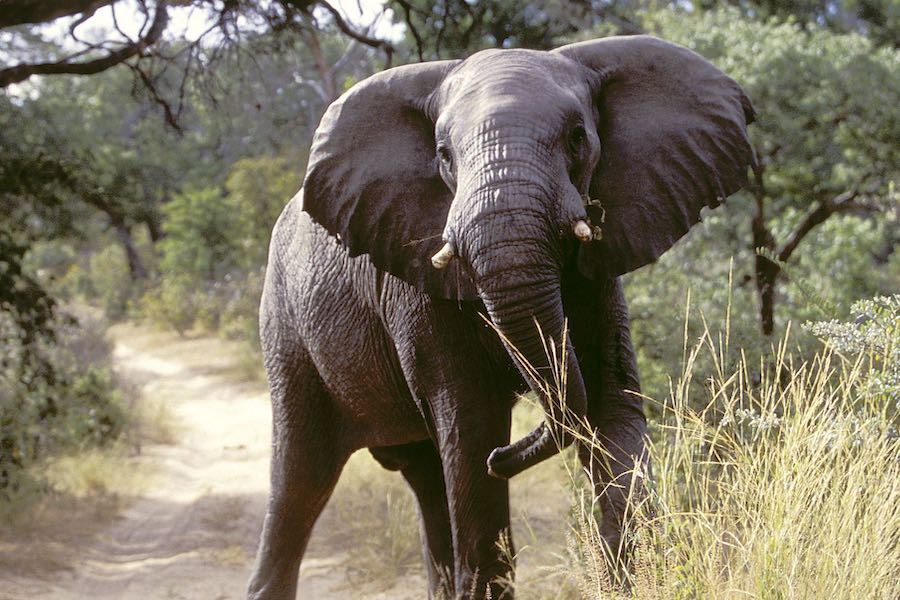
Wildlife Corridors
Paths of Connection and Hope
Maintaining wildlife corridors is critical in Namibia's Zambezi Region, where people and animals use the same landscape. The Wildlife Credits programme has linked sponsors Distell Namibia and Amarula with Sobbe Conservancy that maintains a critical wildlife corridor. This system rewards conservation results and improves the living standards of rural communities.
Read more...
Topics...

Teamwork and Science Enables Coexistence between Farmers and Cheetahs
Cheetahs prey on livestock and farmed game in Namibia, and farmers have been trying to address the problem by removing problem cheetahs
for generations. Yet there is now a new, scientific approach to reducing the problem by understanding how cheetahs move in the environment. This big cat has a different way of using the environment than other cat species, whereby particular areas act as communication hubs among individual cheetahs. If farmers are aware of the location of these hubs, they can avoid putting vulnerable livestock in these areas and thus greatly reduce their losses. Reaching this point required farmers and cheetah biologists to trust each other and work together to find a mutually beneficial and practical solution.
Read more...
Topics...
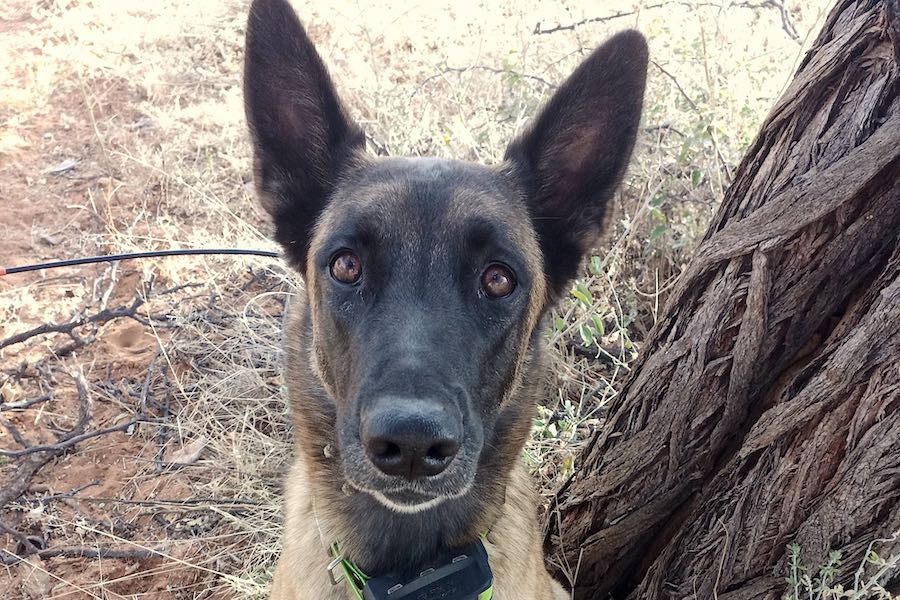
Dogs Help CCF Geneticists Study Cheetahs without Invading their Space
One of the more recent uses for working dogs is to detect the scent of wild animals like cheetahs. By finding the scat that cheetahs leave behind, researchers at the Cheetah Conservation Fund can learn more about the species without subjecting the animals to the stress of capture. CCF's main scat detection dog works closely with her handler to find carnivore scat and is rewarded through play. Once found, the scat is analysed in CCF's state-of-the-art genetics laboratory. Read all about how these dogs are helping cheetah research here.
Read more...
Topics...
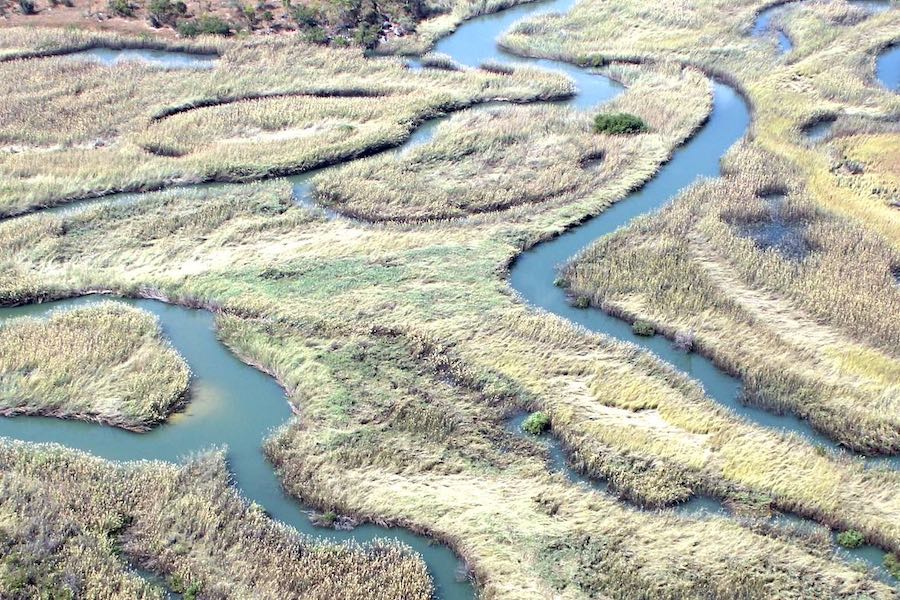
A River in Trouble
The iconic Okavango Delta is under threat, and from more than just oil exploration. The more insidious, and possibly greater, threat is to the water flowing into it from rivers that start in Angola and flow through Namibia before entering the Delta. Agricultural developments are increasing at an alarming rate upstream from the Delta that threaten to greatly reduce the water flows and/or pollute the Cubango/Okavango River. Much more needs to be done to address this problem, writes John Mendelsohn and colleagues.
Read more...
Topics...

The Kunene Rhino Awards
Honouring Those Who Keep an Eye on Namibia's Free-Roaming Rhinos
Rhino Rangers are a critical part of keeping the free-ranging black rhino population in Namibia safe by monitoring their movements and involving local communities in efforts to conserve them. In the first Kunene Rhino Ranger Awards, Save The Rhino Trust honoured these hard-working men and women by awarding 200 prizes for achievements in several different categories.
Read more...
Topics...
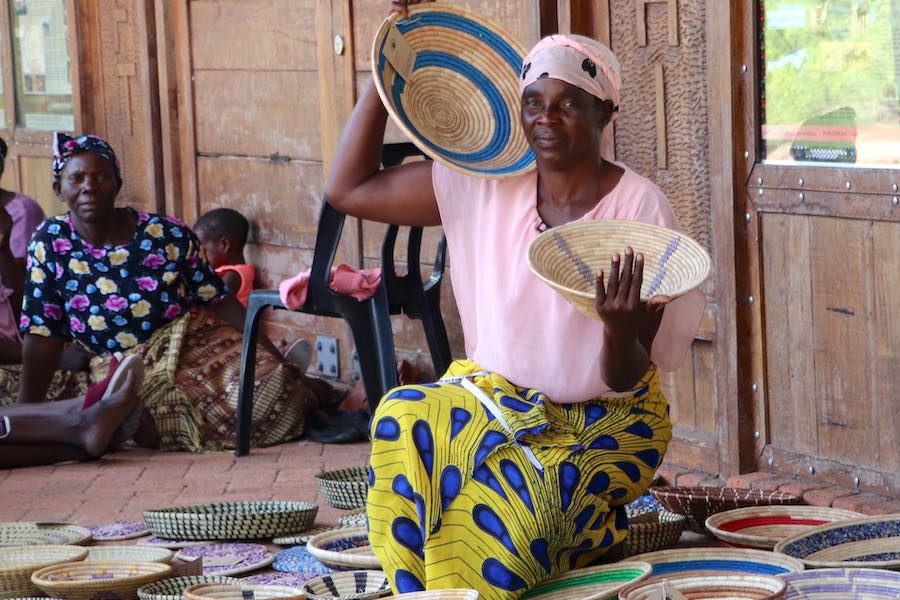
All for One and One for All
The Conservation Relief, Recovery and Resilience Facility
The COVID-19 pandemic has hit Namibia hard, both in terms of human life and economics. The abrupt end of international tourism came as a particular economic shock to communal conservancies that rely heavily on photographic and hunting tourism to fund their conservation efforts. These rural communities were highly vulnerable to job and income losses, and community conservation efforts were in peril. In response, the government and many international and national partners stepped in to create the Conservation Relief, Recovery and Resilience Facility that is designed to assist the conservancies and their tourism partners to survive this economic shock.
Read more...
Topics...

A Newly Discovered Plant Species Saved from the Rising Waters of Neckartal Dam
The filling of Neckartal Dam in dry southern Namibia was welcomed as good news after years of drought. Yet for one previously unknown plant species, this event nearly spelled extinction. Namibian botanists teamed up with international experts to find and rescue as many plants as they could just before the dam waters inundated the plant's habitat. With a long-term conservation strategy in place, this plant's story is not over yet.
Read more...
Topics...
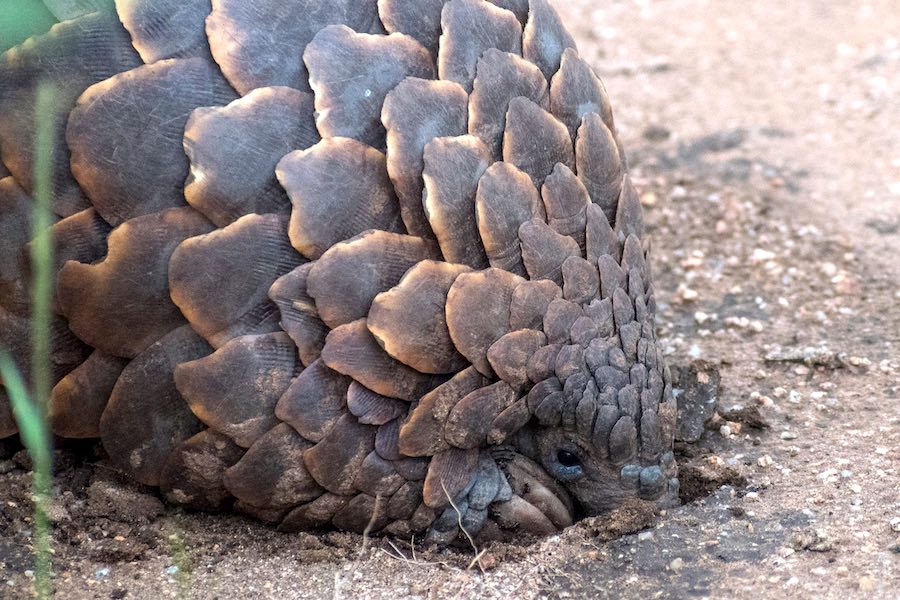
Taking a Scientific Approach to Pangolin Conservation in Namibia
Pangolins are the world's most trafficked animal, and Namibia has seen a recent upsurge in trafficking cases. Pangolins that are seized from traffickers are rehabilitated and released, but we really do not know enough about them to increase the chances of successful releases. As part of her M.Sc, Kelsey Prediger studied the ecological requirements and movements of pangolins to find out how far they go, what they eat, and what makes the ideal burrow for pangolin refuge. The results of this study will be used to guide the release of pangolins in future.
Read more...
Topics...
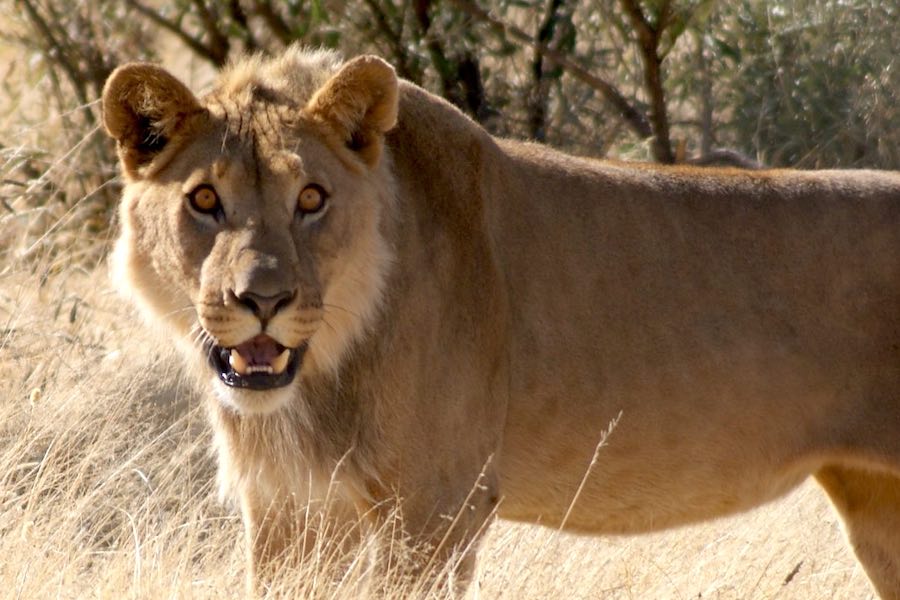
Namibia's Desert-Adapted Lions
The Benefit of Translocating Conflict-Causing Individuals
Several prides of desert-adapted lions in the Kunene Region in northwest Namibia are struggling to survive due to the effects of the recent prolonged drought. Their search for food brings them into direct conflict with the livestock farmers in communal conservancies in this region. Besides trying to mitigate the conflict, the Ministry of Environment, Forestry and Tourism has allowed a few of these lions to be captured and translocated by the N⁄a´an ku sê Foundation. In this article, the team from N⁄a´an ku sê provides an update on how these lions are faring on their 8,000 ha Zannier Reserve near Windhoek.
Read more...
Topics...
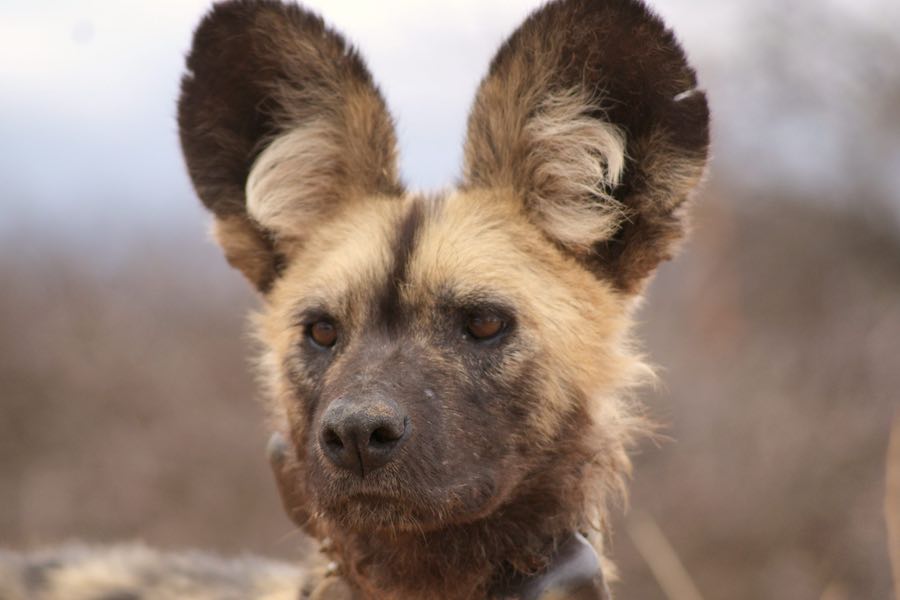
The Future for Conflict African Wild Dogs in Namibia
Is a Metapopulation Approach the Answer?
African wild dogs are among the most endangered carnivores in Africa. Their wide-ranging behaviour coupled with high levels of conflict with livestock farmers make them especially challenging to conserve. Following a successful example of wild dog conservation in South Africa, the N⁄a´an ku sê Foundation is experimenting with translocating wild dogs that would otherwise be killed on farmlands into their fenced reserve. In this article, the N/a'an ku sê team report on the lessons they have learnt from their attempted translocations thus far and discuss the potential of a future wild dog metapopulation in Namibia.
Read more...
Topics...
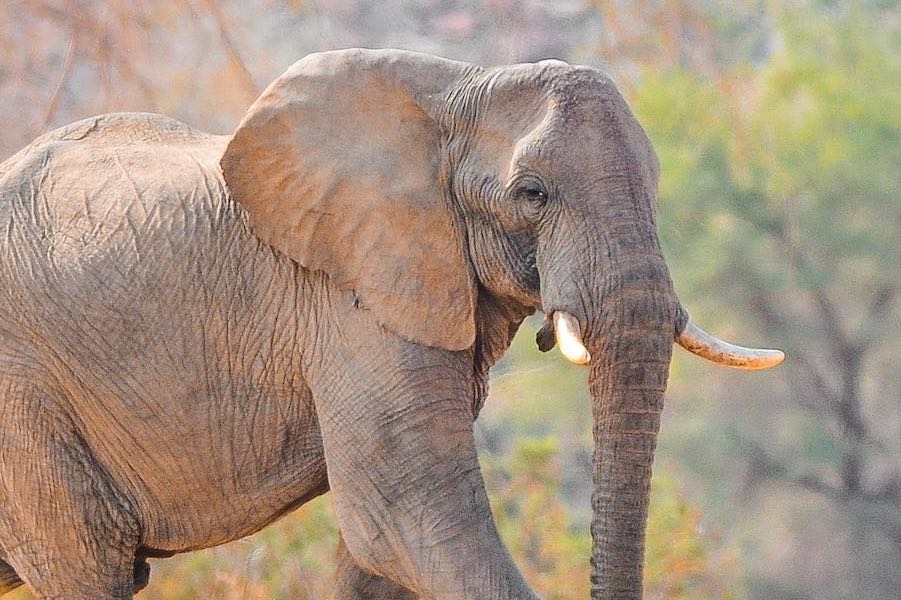
Environmental Education and Training Centre in Desert-Adapted Elephant Country
Environmental education and training are essential for helping children and adults better understand the natural world and even inspire them to take up conservation as a career. A new education centre in the Kunene Region built by Elephant Human Relations Aid will therefore increase our capacity to reach rural communities with up to date information on elephants and their ecosystems. They aim to provide both education programmes for children that fits with national curricula and a training venue for community workshops and nature-based career courses.
Read more...
Topics...
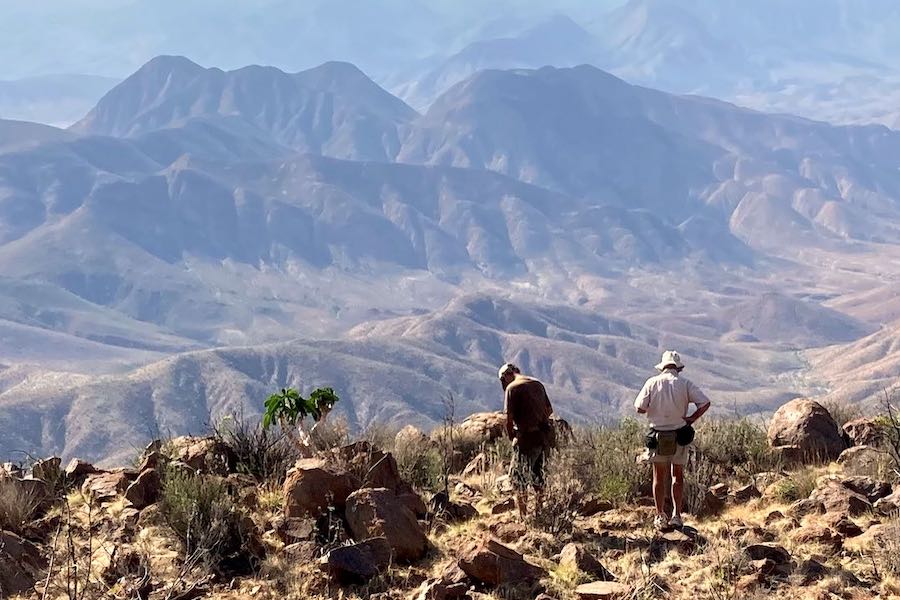
Helicopter Science
Unlocking the Botanical Secrets of the Kaokoveld Mountains
A team of scientists from Namibia and Angola were given the opportunity of exploring some of the most inaccessible mountaintops in northern Namibia and southern Angola. They made the most of this opportunity and found numerous special plant and animal species - some of which occur nowhere else on earth. In this article, the botanists on the team share their most exciting finds and look forward to future expeditions of this kind.
Read more...
Topics...

Conversations in the Cacophony
How Cape Fur Seals Communicate Within their Massive Breeding Colony
The Cape fur seal colony at Cape Cross on the Skeleton Coast is the densest colony of pinnipeds (seals, sea lions, walruses) in the world. It is therefore a dangerous place to live - young adult males have to be careful not to intrude on adult male territories, while pups have to find their mothers in the crowd, or face starvation. Effective communication is therefore a matter of life or death in this colony. Researchers investigated how these seals know who is calling out and why, and uncovered some fascinating insights into seal communication.
Read more...
Topics...

Namibia's Updated Nationally Determined Contribution under the Paris Climate Agreement: Is it Achievable?
Namibia is a signatory to the Paris Climate Agreement and therefore has to determine its Nationally Determined Contribution to tackling climate change every five years. The current draft sets an ambitious target of reducing emissions by 92%. Given that Namibia is already a carbon sink and faces economic woes, is this target achievable? And how does this square with the government's support of oil exploration?
Read more...
Topics...
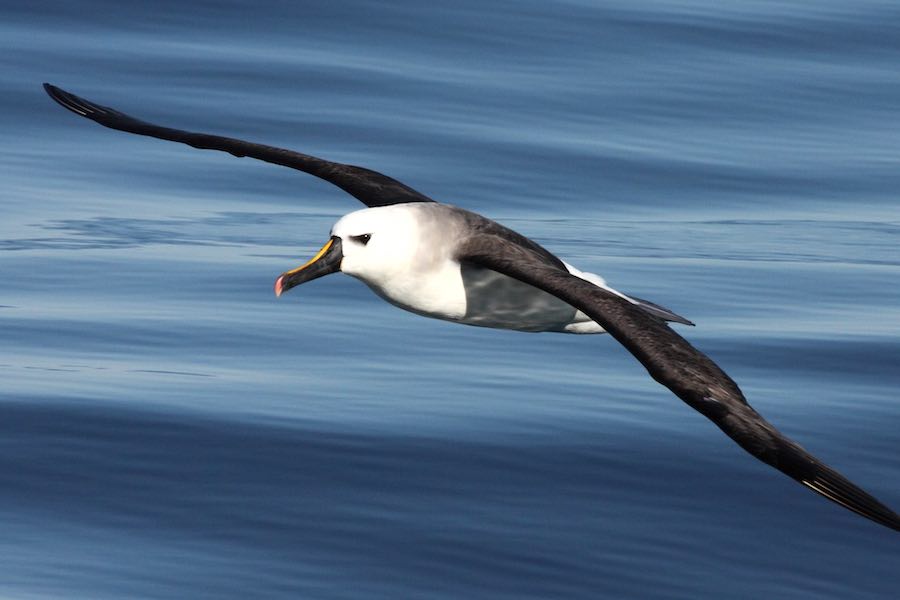
Gliding into a Brighter Future
Albatrosses and Namibian Fisheries
Albatrosses are caught accidentally in commercial fishing operations around the world, and Namibia's fisheries were among the deadliest for seabirds. The Albatross Task Force investigated the extent of the problem and worked with the fishing industry to apply best-practice methods for keeping seabirds away from fishing gear. The result was a stunning 98% reduction in seabird bycatch in our demersal longline fishing operations. A local co-operative of enterprising Namibian women now produce the bird scaring lines for the fishing industry, thus supporting local business. This project contains all of the key ingredients for conservation success.
Read more...
Topics...

Bring in the Bug Squad
Controlling Alien Invasive Plants in Namibia
Some cactus species have become alien invaders
in dry parts of South Africa and Australia, and they have become a major problem in Windhoek too. Before this invasion gets totally out of control, we introduced specific insects as biological control agents. These insects are known from scientific tests and experience in South Africa to prevent the further proliferation of the invasive cactus species without causing any damage to our native plants. Find out more about how insects are chosen as biological control agents and what you can do to help fight the cactus invasion in Namibia.
Read more...
Topics...

Succulent Bio-Economy Project
NUST Biodiversity Research Centre
Researchers are investigating the agricultural production potential of succulent plants as part of a future Namibian bio-economy that will diversify farming activities and prepare for the effects of climate change.
Read more...
Topics...

Dwarf giraffe - Seriously?!
Giraffe Conservation Foundation
Researchers from the Giraffe Conservation Foundation recently recorded not one, but two dwarf giraffes! This is the first time the condition known as skeletal dysplasia has been found in giraffe. Using a technique called photogrammetry, the scientists measured the bone lengths of each giraffe (one in Namibia and one in Uganda), with interesting results.
Read more...
Topics...
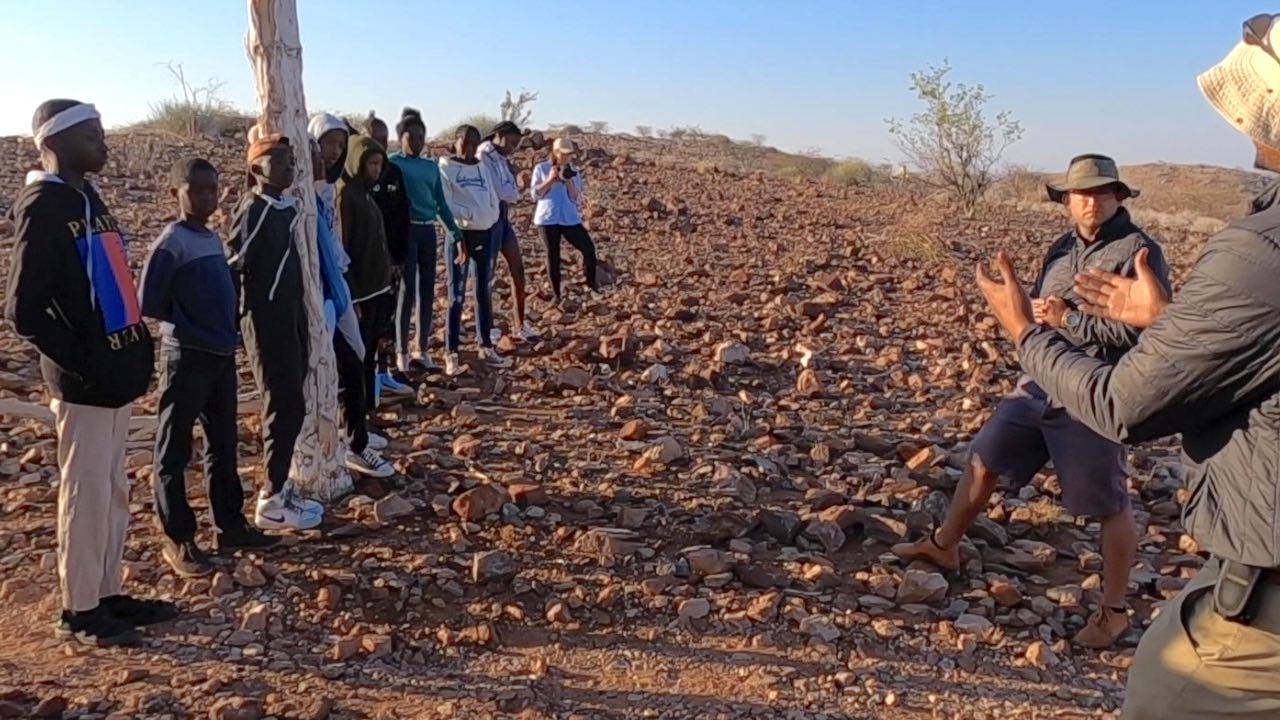
The Young Defenders
Children from two communal conservancies were treated to a free four-day course in conservation and Leave No Trace, made possible through by the Conservation Travel Foundation and Namibian Chamber of Environment. Here are the highlights of that fantastic experience.
See video...
Topics...

Young voices at Vic Falls
A group of young African conservation leaders chat about their work and how young people can play an important role in the future of conservation.
See video...
Topics...

Celebrating World Rhino Day 2019
Namibia celebrated World Rhino Day in the north-western town of Khorixas to raise awareness about rhino poaching and celebrate two years of zero rhino poaching in the Kunene communal conservancies.
See video...
Topics...

Giraffe Conservation Foundation Presents Learning with KEEP: World Giraffe Day
In the third episode of this series our KEEP team talk about giraffe and World Giraffe Day held on 21 June. Learn some ways you can #StandTallForGiraffe together with GCF.
See video...
Topics...

Community Voices on Illegal Wildlife Trade
Brisetha Hendricks, from Ûibasen Twyfelfontein speaks about illegal wildlife trade in the context of Namibia’s community conservation programme.
See video...
Topics...

Strides towards the opening of the Tsau //Khaeb (Sperrgebiet) National Park
The Ministry of Environment and Tourism has developed some infrastructure that will enable tourists to visit this new National Park in the near future.
See video...
Topics...

Episode 3: Salvation Matengu Ntelamo
Salvation works for the Namibia Nature Foundation to establish community fisheries reserves in the Zambezi Region of Namibia. She discusses how these reserves are welcomed by the communities to ensure that this resource is used sustainably to support local livelihoods.
See video...
Topics...

Rhino Pride
The Namibian Rhino Pride campaign mobilises and sensitises young people about environmental issues. In 2018, this included a clean-up campaign along a major tourism route through Namibian communal conservancies.
See video...
Topics...

Namibia's rhino pride campaign
Namibia is a stronghold for black rhinos and hosts the last truly free-ranging population of this species. This would not be possible without the widespread support for rhino conservation showcased in the annual Rhino Pride campaigns.
See video...
Topics...

Pride of Namibia
The community conservation programme in Namibia is an unrivalled success story. Some of the key people who were involved from the beginning explain how things have changed for the better and will continue improving.
See video...
Topics...

Pangolin Conservation Research
Kelsey Prediger is studying the movements of pangolins on the Okonjima Nature Reserve as part of her studies under the NUST Biodiversity Research Centre.
See video...
Topics...

How poachers became caretakers
John Kasaona gives a TED talk about his life story and how local perceptions of conservation have changed since he was a young boy. His father was a poacher, yet John is now a leader in Namibian conservation.
See video...
Topics...

Let Africans Decide - open letter
A group of over 50 community leaders, many of whom are from Namibia, wrote an Open Letter to UK-based celebrities that are intent on banning the imports of hunting trophies to their country. This is a visually engaging version of that letter.
See video...
Topics...

Watering the Tree: A Namibian COVID-19 Story
Omba Arts trust helps San artisans from a remote part of Namibia to bring their beautiful arts and crafts to the international market. They support over 400 artisans, and have stepped in to assist these communities during COVID-19 by establishing the C19 support fund.
See video...
Topics...

Asser Ndjitezeua, Chairperson of #Khoadi-//Hoas Conservancy
Asser, the Chairperson of ≠Khoadi-//Hôas Conservancy explains what Namibian communal conservancies are and how they help people and wildlife coexist.
See video...
Topics...

Namibia is waiting for you
Namibia is still waiting for you to plan your trip to see this beautiful country once we can all travel safely again.
See video...
Topics...

Maxi Louis
Maxi Louis is a conservation leader in Namibia; she reflects on her career and Namibia's community conservation programme. Maxi is a role model for the next generation of Namibian conservationists.
See video...
Topics...

The World's Most Trafficked
Kelsey Prediger of AfriCat Foundation at Okonjima Nature Reserve to discuss the plight of this special yet vulnerable species. Includes some great footage of a pangolin and her baby foraging peacefully in the wild.
See video...
Topics...

Conservation Leadership
One of Namibia's bright young conservationists, Hilma Angula, speaks about her experience in conservation and scholarship for a Masters in Conservation Leadership.
See video...
Topics...

Human-wildlife conflict
People and wildlife share the same space in communal conservancies, but this can lead to conflict. The human-wildlife conflict self-reliance scheme was developed to help mitigate these problems.
See video...
Topics...

Giraffe Conservation Foundation Presents Learning with KEEP: Ecosystems
In the second episode of this series our KEEP team share what an Ecosystem is and why it is important.
See video...
Topics...

Event Books
The Event Book system is a key part of how communal conservancies monitor and manage their wildlife. Conservancy game guards explain how they use Event Books in their daily patrols.
See video...
Topics...

Dream of Namibia...
Most of Namibia's wildlife lives outside the National Parks, and these special places are waiting to be discovered when travel is allowed once more.
See video...
Topics...

Episode 1: Simson Uri-Khob
Save the Rhino Trust Namibia is on the front lines of our defence against rhino poaching in Namibia's remote north-west. Their CEO, Simson Uri-Khob, is a true defender of one of the world's most threatened animals, the desert-adapted black rhino.
See video...
Topics...

The Last Defenders Trailer
The Last Defenders is a conservation docu-series that follows the work and highlights the successes of individuals and organisations dedicated to the preservation of the world’s endangered and at risk species and landscapes.
See video...
Topics...

The Cycling Game-Ranger
Martin has been a game guard for Salambala Conservancy since 1997. He uses a bicycle to patrol the area and serve his community. He describes how he and his family have been affected by the conservancy.
See video...
Topics...

CITES 2019 Namibia Voices
Representatives from four of Namibia's communal conservancies speak about how decisions by the Convention on International Trade in Endangered Species (CITES) could affect Namibian rural communities.
See video...
Topics...

Conservation is not in Lockdown
Save the Rhino Trust's rangers and the conservancy rhino rangers in north-western Namibia remained hard at work while the rest of the nation was on lockdown due to the Covid-19 pandemic.
See video...
Topics...
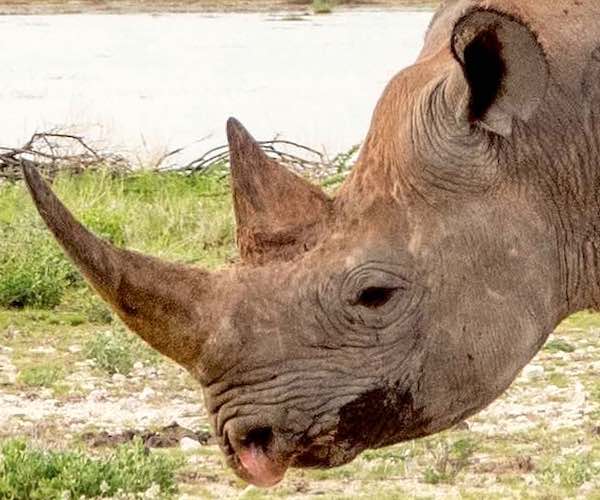
Wildlife crime video collection
Pangolin Conservation Research
Conservation is not in Lockdown
Strengthening Collaborative Efforts Towards Anti-Poaching
The World's Most Trafficked
Addressing wildlife crime in Namibia
Go to videos...
Topics...
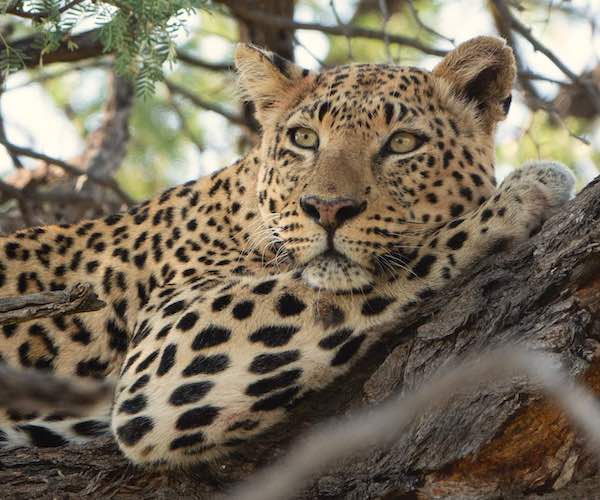
Counting Cats
Namibian Chamber of Environment
Leopards are extremely difficult to count, which makes conservation planning for this species challenging. The 2019 National Leopard Project used information from a variety of different sources throughout Namibia to estimate how many leopards there are and where they occur.
Read more...
Topics...

Children from Communal Conservancies learn how to become Young Defenders of their environment
Namibian Chamber of Environment
Children from two communal conservancies were treated to a free four-day course in conservation and Leave No Trace, made possible through by the Conservation Travel Foundation and Namibian Chamber of Environment. Tracking rhinos, elephants and other wildlife on-foot while learning about caring for their environment.
Read more...
Topics...

Understanding and Conserving the Namibia-Botswana Zebra Migration
Results of a recent aerial survey in the Zambezi Region reveal that the migratory zebra population is doing well, and possibly extending their journey further north. This amazingly long migration covering Namibia and Botswana was only discovered in 2012 and researchers still have many unanswered questions.
Read more...
Topics...

Communal Conservancies Cry for Help to Survive Coronavirus Perfect Storm
Namibian Chamber of Environment
The coronavirus has created a perfect storm
for communal conservancies in Namibia. Researchers reached out to people in five conservancies to find out what their greatest challenges were during the recent lockdown. Numerous stakeholders have since joined hands to help the conservancies weather the storm.
Read more...
Topics...

What you can do to help vulture research
Namibian Chamber of Environment
A new study on Lappet-faced Vultures in Namibia uses camera traps and sighting records from the public to show a high survival rate for a vulture population in the Namib-Naukluft.
Read more...
Topics...

The Coronavirus and Namibian Conservation
Namibian Chamber of Environment
Conservation efforts in Namibia has carried on despite the coronavirus epidemic, but the conservation partners face a stern test in the coming months and years due to reduced income from international tourism. Here is what you can do to help.
Read more...
Topics...

Conserving lions in the heart of KAZA – The Kwando Carnivore Project
Namibian Chamber of Environment
The Zambezi Region is a critical landscape for conservation, but it is also a complex matrix of protected areas and community farmlands. People and lions thus frequently come into conflict here. The Kwando Carnivore Project is providing solutions for human-lion coexistence in collaboration with communal conservancies and other partners.
Read more...
Topics...

Introducing Community Conservation Namibia.com
Namibian Chamber of Environment
Information about communal conservancies in Namibia is now more accessible than ever. Gail Thomson takes a brief tour of the new community conservation website to whet your appetite for exploring the site for yourself.
Read more...
Topics...

The Battle for the Soul of Conservation - And what it means for Namibia
Namibian Chamber of Environment
Two groups of conservation scientists are doing battle over the soul of conservation. Should we manage wildlife based on our feelings about animals or the need for pragmatic solutions to real-world problems? Answering this question has ramifications for conservation practice globally and in Namibia.
Read more...
Topics...

Opinion
15th November 2019
Using Namibia's Wildlife to Drive a Green Economy
Namibian Chamber of Environment
The Namibian wildlife economy has grown due to conservation policies that devolve ownership rights of wildlife to the people living on the land. There nonetheless remains room for further growth in the sector that will benefit both people and wildlife.
Read more...
Topics...
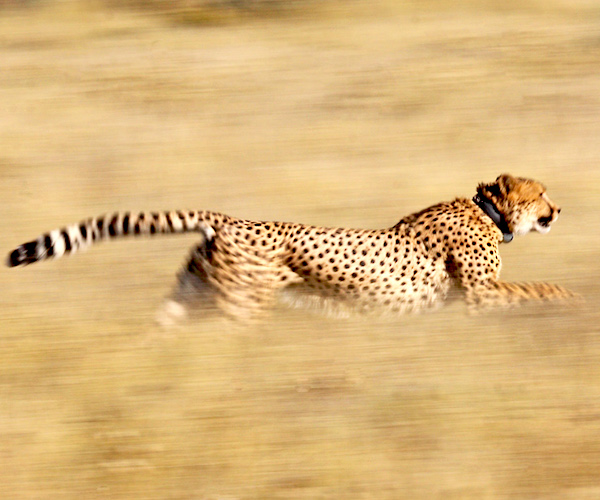
Want to do fieldwork in the 21st century?
Leibniz Institute for Zoo and Wildlife Research
Biologists at the Leibniz Institute for Zoo and Wildlife Research are adapting devices used in smart-watches and phones to find out more about cheetah behaviour and movements in Namibia.
Read more...
Topics...

Friends will be friends – even in the midst of a pandemic
Omba Arts Trust
The Covid-19 pandemic and related restrictions on international travel has had a devastating impact on the arts and crafts market in Namibia. Omba Arts Trust, which has empowered Namibian women to hone their craft-making skills and marketed their products to tourists since 2004, experienced a 90% income cut. Yet Director Karin le Roux is determined to find ways to help the local artisans who have partnered with Omba over the years. Find out how you can help.
Read more...
Topics...

Living From the Veld in Namibia
Namibian Chamber of Environment
Danene van der Westhuyzen's new book, From the Veld, showcases all-Namibian recipes for food obtained from nature. Danene and her family live off the land by hunting, gathering, milking and picking the ingredients needed for the delicious meals at home and at their two game lodges. We ask her more about life on the farm and the philosophy behind her new book and hunting in Namibia.
Read more...
Topics...

Snakes in the City – the Windhoek Experience
Snakes of Namibia
Human-snake encounters can be dangerous for both parties, unless one calls professional snake removers. Francois Theart, the founder of Snakes of Namibia, tells us that his work is about more than just removing snakes from residential areas in Windhoek – he wants to find out what is driving human-snake conflict in the city and how to reduce it in the long-term. He shares the results of the first study of snake removals in the city in collaboration with the NUST Biodiversity Research Centre.
Read more...
Topics...

Conserving the Skeleton Coast and Iona Trans-frontier Conservation Area
Namibia University of Science and Technology
Namibia and Angola have created a Trans-frontier Conservation Area linking the Skeleton Coast and Iona National Parks. A team from Namibia University of Science and Technology (NUST) are working with their Angolan counterparts to better understand this ecosystem and pave the way for future conservation initiatives that include local communities as key stakeholders.
Read more...
Topics...

Science be Damned?
In light of the conspiracy theories swirling around the COVID-19 pandemic, Helge Denker asks why science - from zoonotic diseases to conservation research, amongst others - is often doubted while hoaxes are so easily believed. Are we victims of the Dunning-Kruger effect, treating correlation as causation, or just biased for one reason or another?
Read more...
Topics...

From Poacher’s Son to Conservation Leader – Defending Namibia’s Community Conservation Story
Integrated Rural Development and Nature Conservation
John Kasaona traces his own life story and the history of his people as it relates to conservation in Namibia. Given the success of these grassroots efforts, he expresses his frustration over those who criticise Namibian policies unfairly.
Read more...
Topics...

From Facing Certain Death to Contributing to Science – A Pangolin's Tale
Namibian Pangolin Working Group
A female pangolin was confiscated from wildlife traffickers by the Blue Rhino Task Team following a tip-off from the US Embassy in Namibia. She has now become the first satellite-tracked pangolin in Namibia. Kelsey Prediger of the Namibian Pangolin Working Group tells us her story and what it means for pangolin research and conservation.
Read more...
Topics...

Managing Namibian Rangelands in the Face of Uncertainty
Agri-Ecological Services
Namibia's dry climate with highly variable rainfall makes farming and land management a complicated business that can lead to rangeland degradation. Dr Cornelis van der Waal delivers up-to-date information based on remote sensing data for farmers, conservation managers and conservancies. This information aids adaptive management and our ability to respond to climate change.
Read more...
Topics...

The Great Elephant Balancing Act
Namibian Chamber of Environment
Recent research on elephants emphasise the importance of male elephants in their society. This research is used as a club to batter countries in southern Africa into changing their elephant management policies. This article reviews the scientific evidence and calls for a balanced approach that considers both humans and elephants.
Read more...
Topics...

Key Questions for Human-Elephant Conflict Research
Namibian Chamber of Environment
Reducing human-elephant conflict is a critical challenge in Namibia, where elephant populations are expanding into farming areas. More research is needed to understand the effectiveness of lethal control and how it fits in with non-lethal methods. Three questions are posed to stimulate research into this challenging topic that will assist long-term elephant management.
Read more...
Topics...

Is the plastic bag levy reducing single-use plastic waste in Namibia?
Gobabeb-Namib Research Institute
Little is known about the effectiveness of or public support for the plastic bag levy in Namibia. The Gobabeb - Namib Research Institute asked questions and made observations in five towns regarding plastic bag use and attitudes towards the levy. Much is still to be done to educate the public on the problem of plastic and promote viable alternatives.
Read more...
Topics...

Placing Namibia in a Global Context
Several global reports on wildlife conservation have a bearing on Namibia and the broader southern African region. Siphiwe Lutibezi takes a look at the Living Planet Report and other recent global reports and applies some of the lessons learned to the Namibian situation.
Read more...
Topics...

Namibia's Biodiversity Research Centre - Using Applied Research to Support Conservation Decision-making
Namibia University of Science and Technology
Prof. Morgan Hauptfleisch tells us about the NUST Biodiversity Research Centre that produces quality trans-disciplinary research to support data-driven decision-making for wildlife management and conservation through their postgraduate research programme.
Read more...
Topics...

The Namib Desert's hairy-footed ecological engineers
Namibia University of Science and Technology
The hairy-footed gerbil may be small, but this new research confirms that it is an important ecological engineer in the Namib Desert ecosystem. Halle Shaanika spent five intense months in the desert to explore the ecological role of these diminutive rodents. He further considers the importance of gerbils for the survival of much larger herbivores in a harsh, hyper-arid environment.
Read more...
Topics...

The state of Community Conservation in Namibia
Community Conservation Namibia
A summary of the State of Conservancies 2017 report.
Read more...
Topics...

Conservation Partnerships to Combat Wildlife Crime in Namibia
Namibian Partnerships Against Crime
Topics...
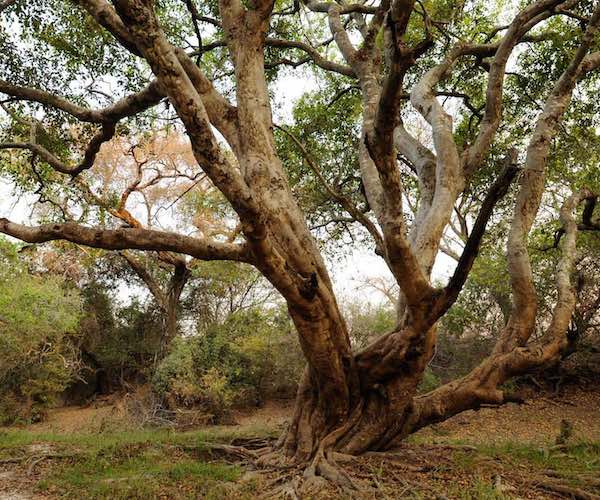
Namibian Community Forests
Namibian Chamber of Environment
What are community forests and how do they work? How do they fit in with Namibia's community conservation programme? What plant resources are conserved by community forests in Namibia?
Read more...
Topics...

The Game Products Trust Fund
Namibian Chamber of Environment
The Game Products Trust Fund in Namibia was established as a means of channeling income from sustainable use of wildlife back into wildlife conservation. This factsheet outlines how the Fund is managed and how the money is spent.
Read more...
Topics...

Human-Wildlife Conflict Self-Reliance Scheme
Namibian Chamber of Environment
What is the Human-wildlife conflict self-reliance scheme? How does it work and how does it fit in with the overall policy to reduce human-wildlife conflict in Namibia?
Read more...
Topics...

Responsible Photographic Tourism
Namibian Chamber of Environment
Visitors to Namibia are encouraged to practice responsible tourism, economically, socially and environmentally. Support the tour operators and lodges in Namibia who are committed to responsible tourism.
Read more...
Topics...

Community Game Guards
Namibian Chamber of Environment
What are Community Game Guards and how do they help to protect wildlife?
Read more...
Topics...

Community Fisheries Reserves
Namibian Chamber of Environment
What is a community fisheries reserve and how do they protect freshwater fish stocks in the Zambezi Region? How are they established and how do they fit in with Namibia's Communal Conservancies programme?
Read more...
Topics...

Conservation Hunting
Namibian Chamber of Environment
What is conservation hunting in Namibia? How does hunting contribute socio-economically to the country? Namibian professional hunters, the government and other stakeholders promote ethical conservation hunting practices.
Read more...
Topics...

The Event Book System and Database
Namibian Chamber of Environment
The Event Book system helps individual conservancies keep track of wildlife-related incidents within their areas and contributes to a national database of information on wildlife in communal conservancies.
Read more...
Topics...

What is being done to fight wildlife crime in Namibia?
Namibia’s response to increasing wildlife crime is bearing fruit, particularly since the inception of the Blue Rhino Task Team. Helge Denker shares key statistics and initiatives that reveal how Blue Rhino are tackling poaching of rhinos, elephants and pangolins.
Read more...
Topics...

Communal Conservancies
Namibian Chamber of Environment
What are Communal Conservancies and how do they contribute to local economies and wildlife conservation in Namibia?
Read more...
Topics...

Unlocking the treasure box
The Tsau //Khaeb National Park (Sperregebiet) is about to open to the public after a century of highly restricted access due to diamond mining. Antje Burke introduces us to the diverse landscapes, geology, biodiversity and historical sites awaiting future visitors to this unique part of Namibia.
Read more...
Topics...

Wildlife Credits
Wildlife Credits is a new way of rewarding rural communities for conserving their wildlife by making direct payments to conservancies based on measurable conservation performance. Each scheme adapted to local circumstances and supported by partners in tourism and conservation.
Read more...
Topics...
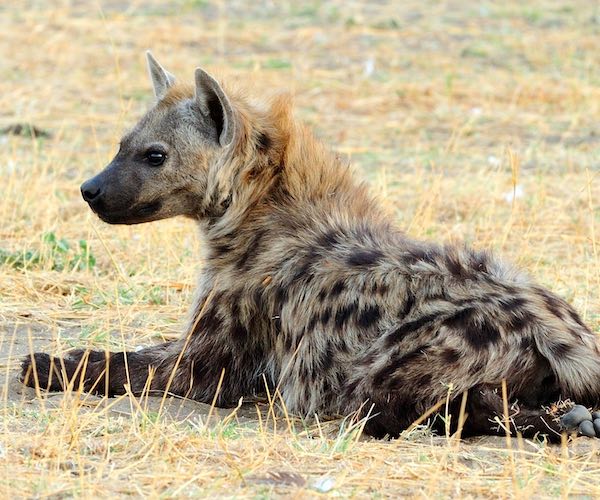
Hyaena research and conservation efforts at the Ongava Research Centre
Ongava Research Centre (ORC)
Hyaena researchers from across Africa converged on the Ongava Research Centre for a three-day workshop as part of the Hyaena Distribution Mapping Project. They created up-to-date range maps for all four African hyaena species and shared their latest research findings.
Read more...
Topics...
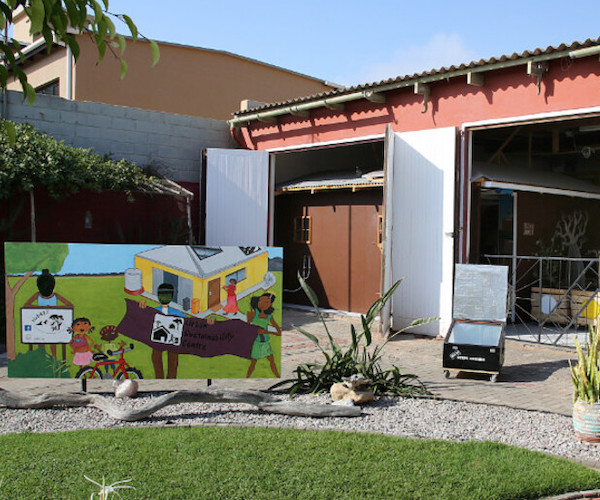
Swakopmund gets a brand new Education for Sustainable Development centre
Namibian Chamber of Environment (NCE) interview with Panduleni Haindongo
Panduleni Haindongo of the Namib Desert Environmental Education Trust (NaDEET) talks to us about their new education centre that shows schoolchildren, teachers and the general public how they can lead more sustainable lifestyles, particularly in urban environments.
Read more...
Topics...
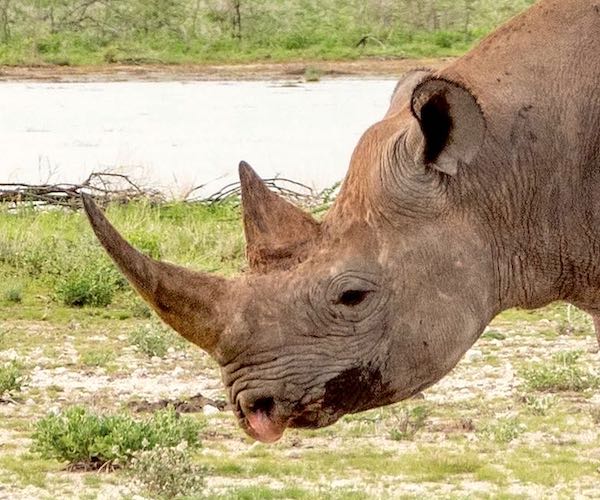
Signs of success
Illegal wildlife crime is a huge threat to African wildlife. Conservation and law enforcement institutions across five countries, including Namibia, are working together to stop poaching, improve investigation procedures and strengthen legal prosecution against wildlife criminals.
Read more...
Topics...
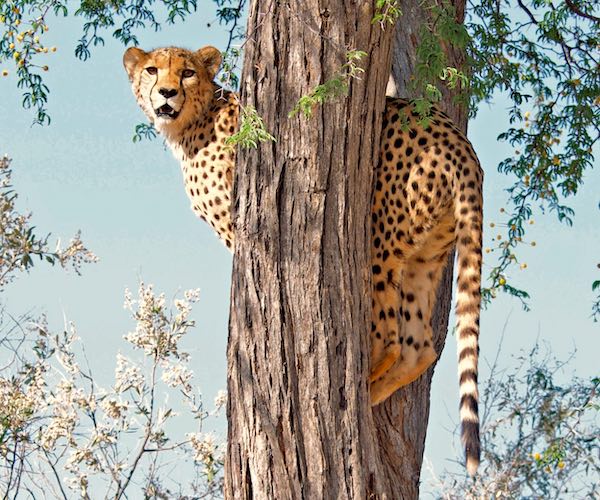
The N/a´an ku sê Rapid Response Unit
N/a´an ku sê
Farmers and carnivores frequently come into conflict on Namibian farmlands. N/a´an ku sê has developed a Rapid Response Unit to help farmers who experience livestock or game losses by capturing suspected problem animals and tracking their movements using GPS collars.
Read more...
Topics...

On the Edge of Namibian Enquiry
Ongava Research Centre
Scientific research is driven by curiosity and our need to find solutions to pressing problems. John Mendelsohn, director of Ongava Research Centre, shares some burning research questions to inspire Namibian scientists on their quest for knowledge to guide management actions.
Read more...
Topics...

Nowhere else on Earth
The Sperrgebiet (forbidden zone
) hosts an incredible diversity of plant life, including many rare and endemic species. These plants must be protected, especially as new tourism infrastructure is built prior to the opening of Tsau //Khaeb National Park.
Read more...
Topics...
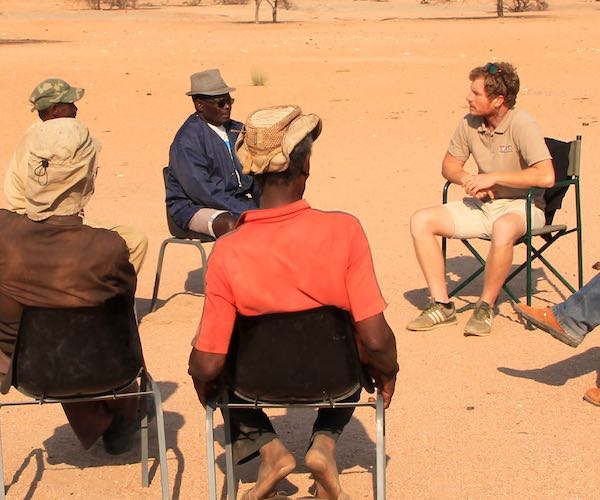
Leaving More than Just Dust
Tourism Supporting Conservation (TOSCO)
The Conservation Contribution programme run by Tourism Supporting Conservation (TOSCO) focuses on reducing human-wildlife conflict and supporting community game guards in the Kunene and Erongo Regions.
Read more...
Topics...
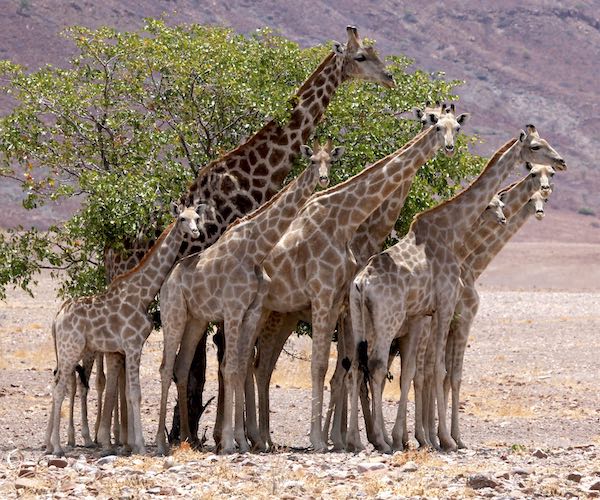
Namibia at the forefront of Giraffe Conservation
Giraffe Conservation Foundation
Giraffes are amongst the most iconic African animals, yet they are surprisingly under-studied. The Giraffe Conservation Foundation started the first long-term, detailed study of the species in north-western Namibia that revealed fascinating information about their movements, social life and conservation needs.
Read more...
Topics...
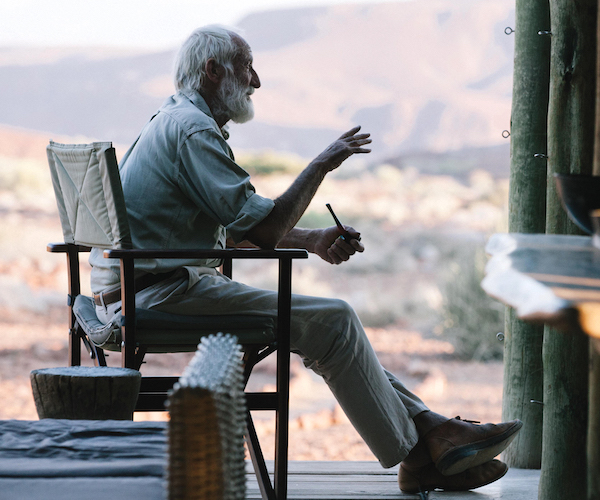
Tribute to Garth
Pioneering Namibian conservationist Garth Owen-Smith passed away in early 2020. As co-founder of Integrated Rural Development and Nature Conservation (IRDNC), he played a key role in establishing the communal conservancy programme. Colleagues Brian Jones and Chris Weaver pay him this tribute.
Read more...
Topics...

Environmental education in action
Giraffe Conservation Foundation
Many schoolchildren around Windhoek, Namibia have never had the opportunity to see and learn about wild animals and their habitat. Giraffe Conservation Foundation is changing that through their Khomas Environmental Education Programme that introduces 2,500 children to nature every year by visiting the Daan Viljoen Nature Reserve.
Read more...
Topics...

Easing the Enmity
N/a´an ku sê
Namibian farmers and spotted hyaenas come into conflict due to livestock losses. N/a´an ku sê has tested several practical fencing solutions in southern Namibia to protect livestock from hyaenas on communal and freehold land during the day and at night.
Read more...
Topics...
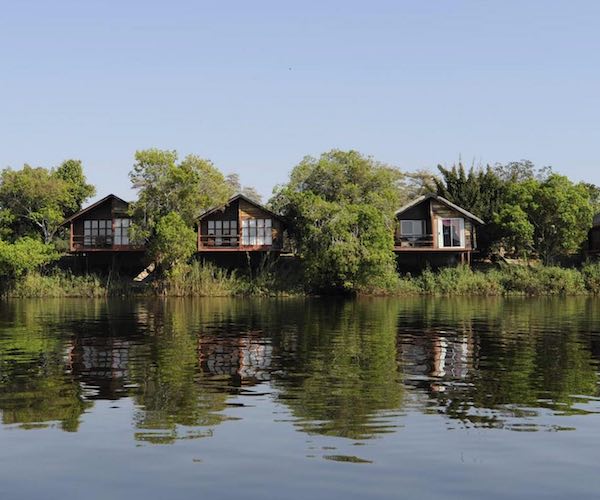
Conservationtourism.com.na
Namibian communal conservancies rely on tourists visiting lodges and campsites located in their areas. The Namibian Association of CBNRM Support Organisations (NACSO) has re-designed a website aimed at marketing tourism in conservancies to attract new visitors.
Read more...
Topics...
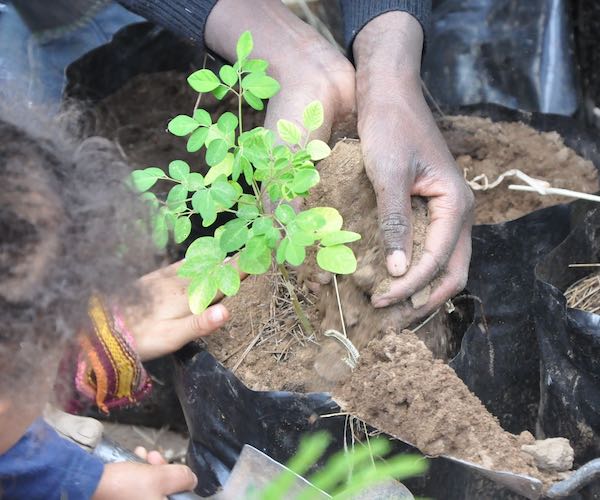
Paving the way for carbon-neutral travel in Namibia
Tourism Supporting Conservation (TOSCO)
Tourism contributes to the economy and nature conservation in Namibia. Yet tourism flights and road travel are responsible for high carbon emissions. Tourism Supporting Conservation (TOSCO) and Eloolo have teamed up to reduce the industry’s carbon footprint by planting trees.
Read more...
Topics...
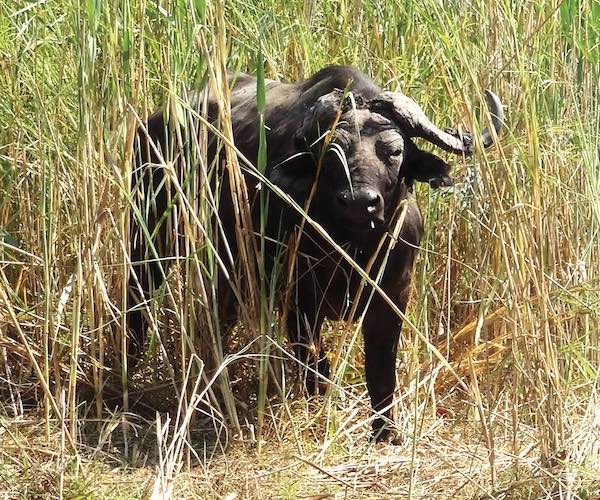
Rewarding sustainable conservation hunting in Namibia
Namibia Professional Hunting Association
Conservation hunting is most sustainable when old animals that have already contributed to the gene pool are hunted. The Namibia Professional Hunting Association (NAPHA) introduces their Age-Related Trophy Measuring System to reward hunters for taking old animals.
Read more...
Topics...

Using Stripe Patterns to Monitor Hartmann’s Mountain Zebra in Namibia
The Mountain Zebra Project uses camera traps to take photographs of zebras that can be individually identified using their stripe patterns. This long-term project provides ecological insights to inform conservation actions for these desert-dwelling zebras.
Read more...
Topics...

Can Urbanisation Help Namibia Adapt to Climate Change?
Development Workshop Namibia
Namibia is urbanising rapidly, but most towns are not prepared for rapid expansion. This leads to expanding informal settlements that have negative social and environmental impacts. Urbanisation can be a good thing for Namibia, but we must do more to accommodate those seeking a better life.
Read more...
Topics...

Namibia’s Environmental Information Service
Namibian Chamber of Environment
The EIS is Namibia’s one-stop-shop for environmental information. Established 15 years ago, this online platform has expanded to include a citizen science Atlasing feature, a scientific journal and an extensive library of environmental information.
Read more...
Topics...

It’s Time To Grow
Namib Desert Environmental Education Trust
The Namib Desert Environmental Education Trust’s It’s Time to Grow
booklets teach children about sustainable development. They are working with Namibian teachers to translate these materials into their mother tongues and make the most out of these booklets.
Read more...
Topics...

A Record-Breaking Journey
Worldwide Fund for Nature in Namibia
Researchers in Namibia and Botswana investigating the ‘mystery of the disappearing zebra’ stumbled upon the world’s longest zebra migration. Why the zebra travel so far remains a mystery, yet emphasises the need for trans-boundary conservation efforts.
Read more...
Topics...

SunCycles Namibia
EBikes4Africa
Conservancy game guards have to cover large areas to fulfil their responsibilities of monitoring wildlife and prevent poaching. SunCycles Namibia has provided solar-powered e-bikes that make travelling through thick sand or over long distances much easier.
Read more...
Topics...

Mining and the Environment
Namibian Chamber of Environment
The Chamber of Mines and the Namibian Chamber of Environment have joined forces to create environmental Best Practice Guidelines for the mining sector. They have further established a funding mechanism for sustainable development projects benefitting people and the environment.
Read more...
Topics...

How Namibia is Outsmarting Criminals
Namibian Chamber of Environment
Namibia is turning the tables on wildlife poachers who are trying to steal our natural heritage. A new collaborative team called Blue Rhino has achieved enormous success since its establishment in 2018. Their intelligence-based strategy that includes Namibian citizens has poachers on the run.
Read more...
Topics...

Inland Fisheries Reserves
Namibia Nature Foundation
The Namibian Nature Foundation is working with conservancies in the Zambezi Region to establish Fisheries Reserves under new supportive legislation by the Ministry of Fisheries and Marine Resources.
Read more...
Topics...

Gaining Insights into the Secret Lives of Wild Animals
Namibian Chamber of Environment
Attaching tracking devices to wild animals may seem a bit intrusive, but the information we gain from this technology is worth it. Researchers using these devices on a wide variety of species in Namibia and neighbouring countries came together to share their insights and experiences.
Read more...
Topics...

The Year of the CCF Livestock Guarding Dog
Cheetah Conservation Fund
Conflict between livestock farmers and carnivores poses a key threat to cheetahs in Namibia. The Cheetah Conservation Fund celebrates 25 years of breeding livestock guarding dogs for local farmers to reduce their losses to cheetahs and other carnivores.
Read more...
Topics...

Teaching Namibia’s Far-Flung Teachers
EduVentures Trust
EduLink is taking the latest innovations in environmental education to teachers living in Namibia’s remote rural areas. Their mobile classroom has brought teachers from far-flung locations together to sharpen their teaching skills.
Read more...
Topics...

What Do You Do When the Elephants Arrive?
Namibian Chamber of Environment
Rural farmers often struggle to live with elephants in Namibia’s north-western Kunene Region. The Ministry of Environment and Tourism has stepped in to assist them by providing more information on elephant movements and developing ways to prevent further conflict.
Read more...
Topics...

Swimming blind
Namibia Nature Foundation
A tiny population of a unique, completely blind catfish species occurs in only one underwater cave near Otavi in Namibia. A research team is finding out more about this fish and its cave ecosystem to ensure its future survival.
Read more...
Topics...

Angolan Island Paradise for Cape Cormorants
An island off the coast of Angola supports surprising numbers of Cape Cormorants, with a six-fold population increase in just 12 years. This Endangered species is declining elsewhere, so this island offers hope for the future, provided fish-stocks are adequately protected.
Read more...
Topics...

Beating Back the Bush
Namibian Chamber of Environment
A number of recent scientific studies published in the Namibian Journal of Environment tackle the thorny topic of bush encroachment
. Scientists are divided over how to tackle the problem. Dive into the debate here.
Read more...
Topics...

Are Namibia's Carnivores at Risk?
Namibian Chamber of Environment
Carnivore conservation scientists in Namibia have collaborated to produce a Red Data Book for the country. Their assessments will help identify which carnivores are most threatened in Namibia and what we can do to conserve them, from black-footed cats to lions.
Read more...
Topics...
Share:
Subscribe
Partner sites:
Environmental Information System (EIS)Namibian Journal of Environment
Conservation Tourism in Namibia
We use cookies to monitor site usage and to help improve it. See our Privacy Policy for details. By continuing to use the site, you acknowledge acceptance of our policy.


